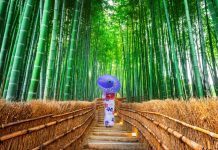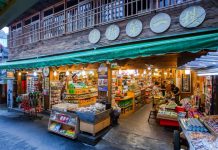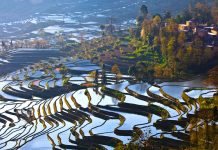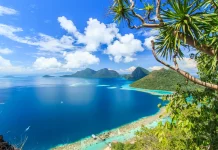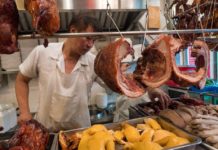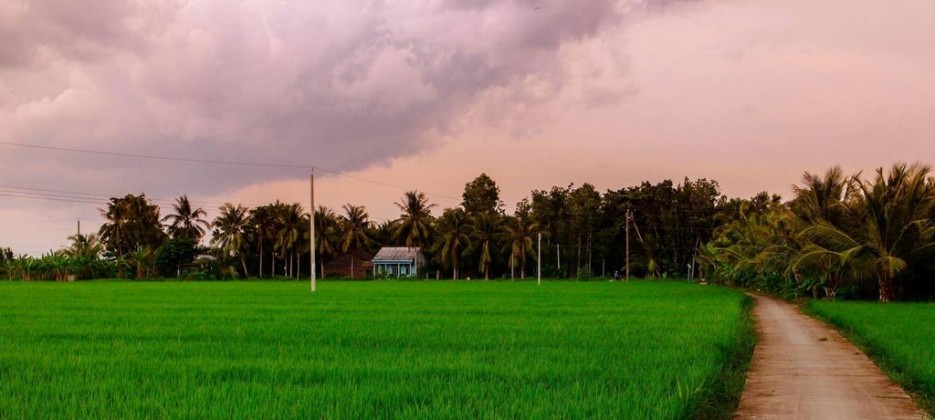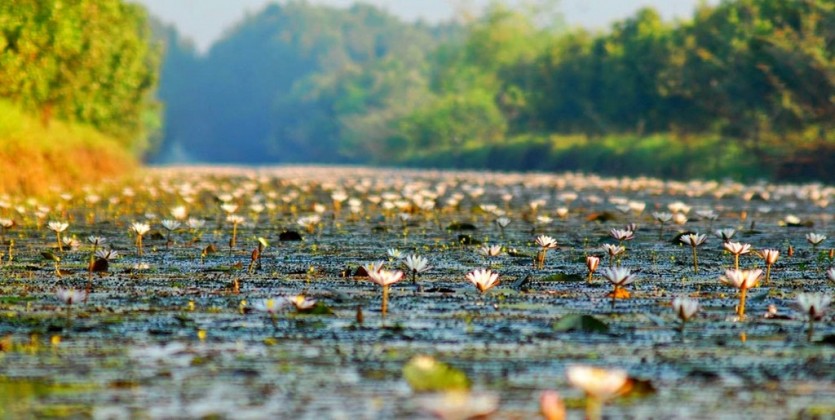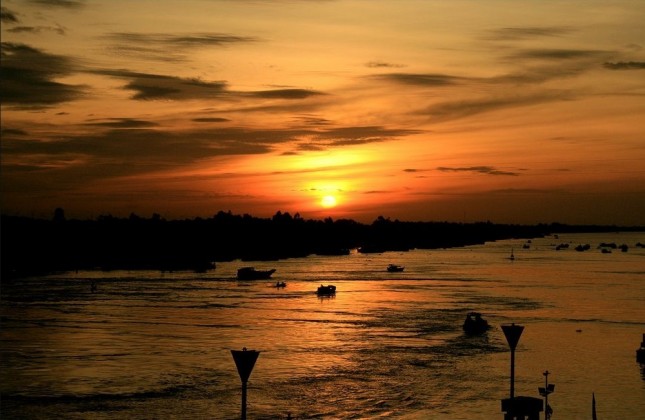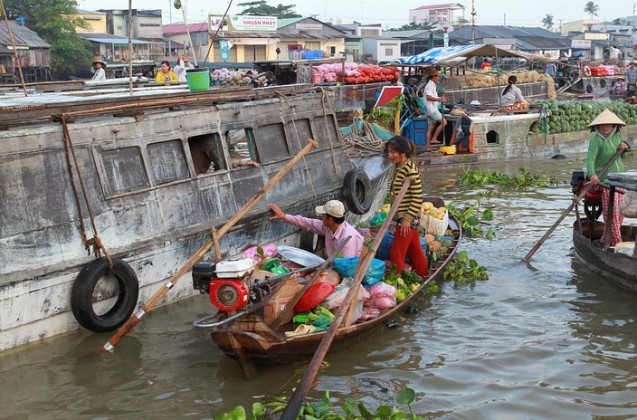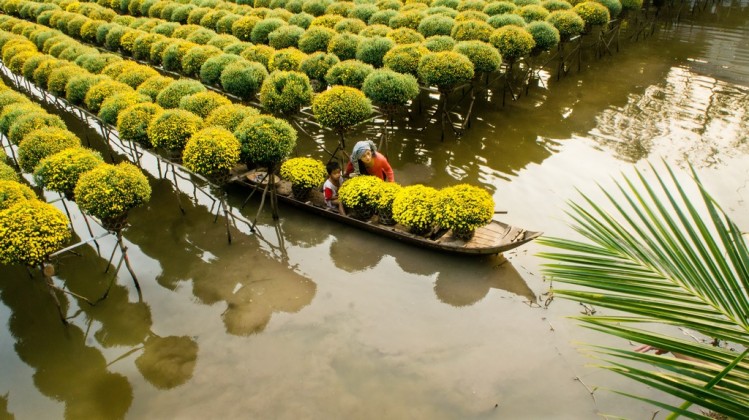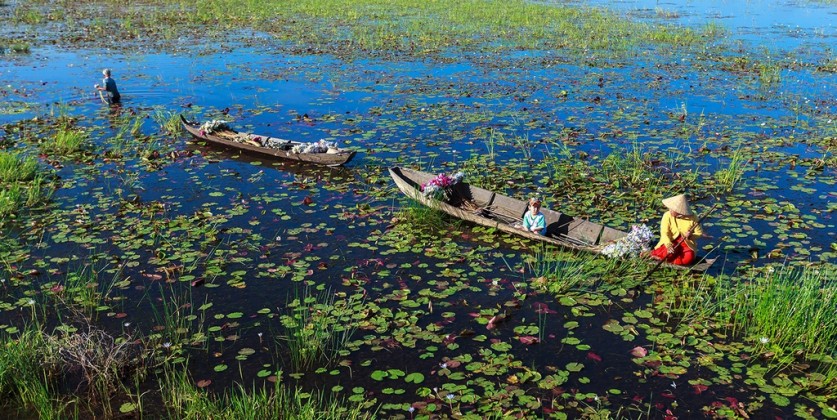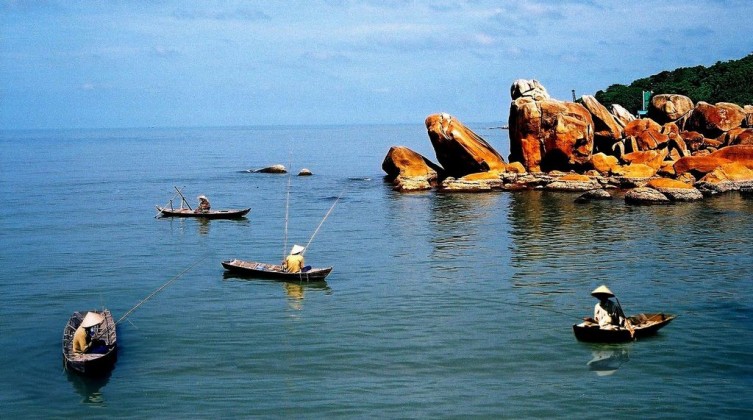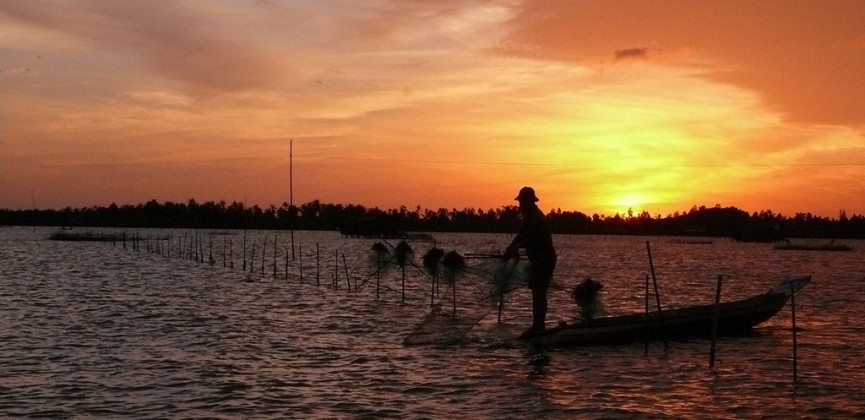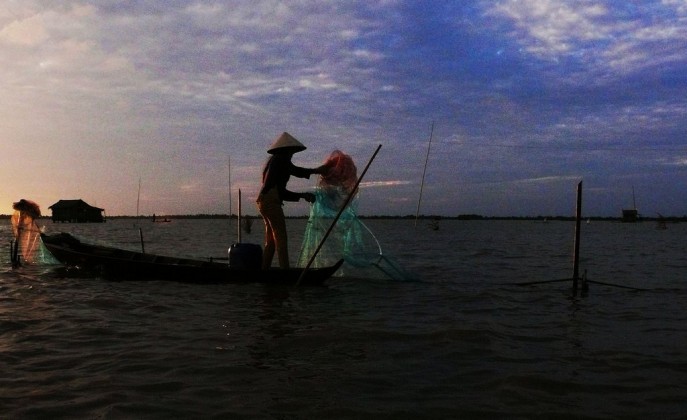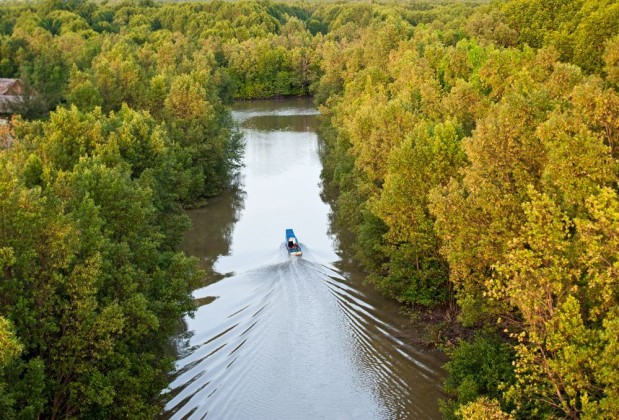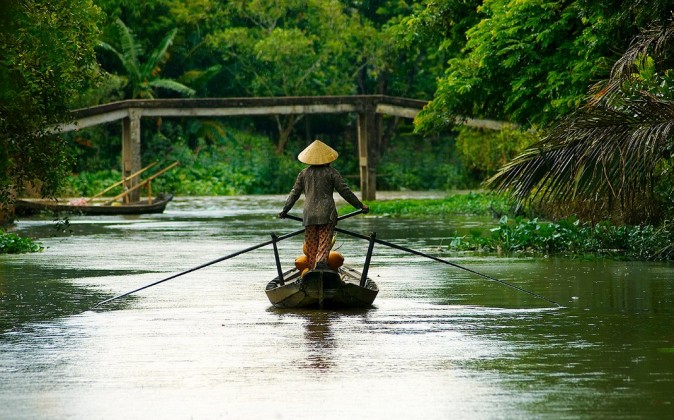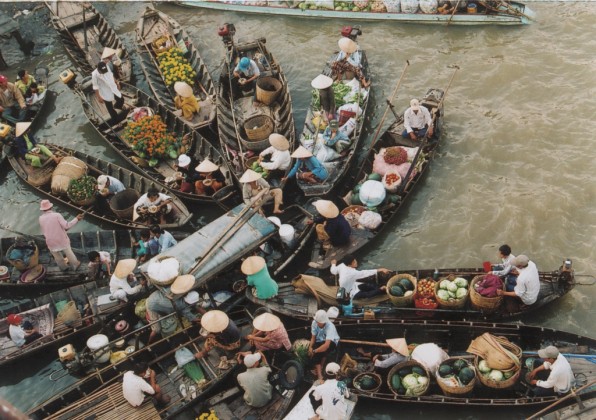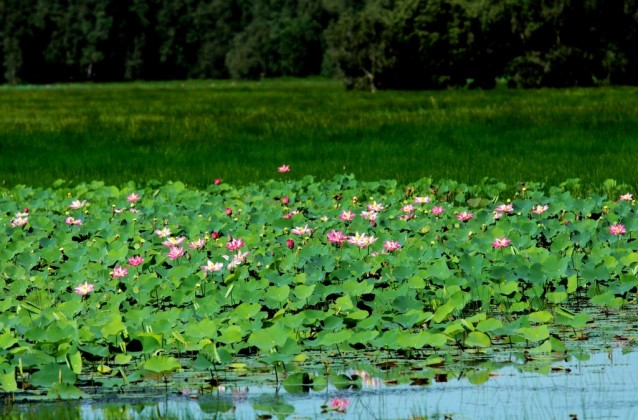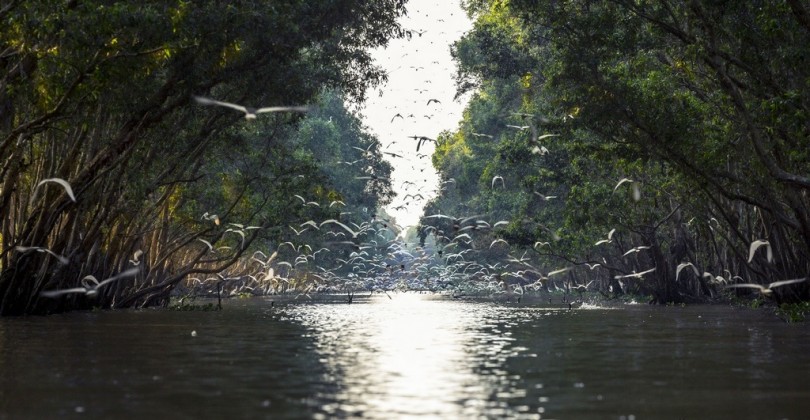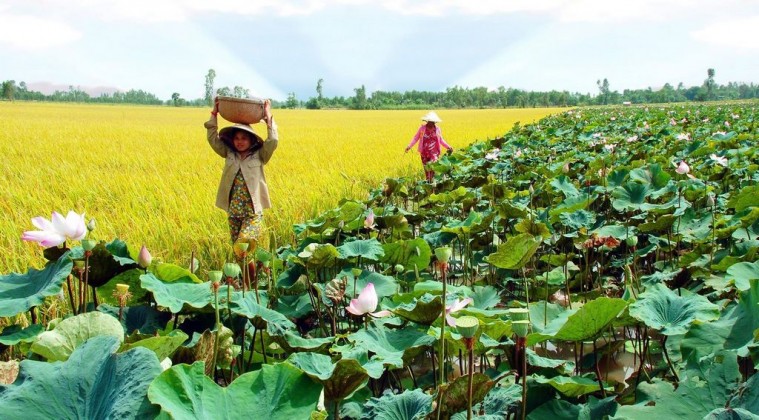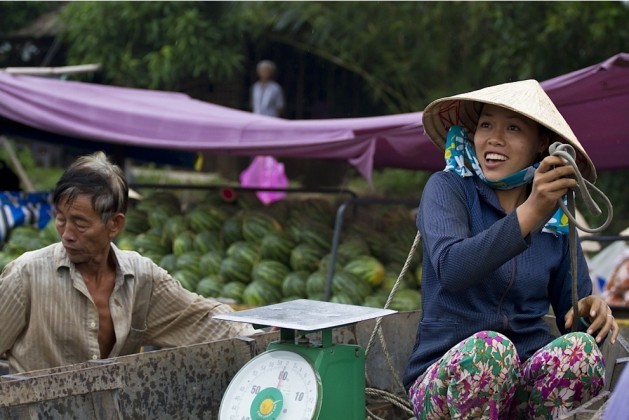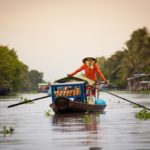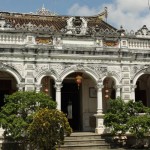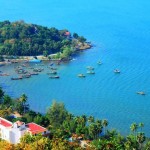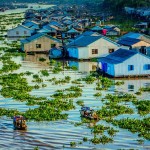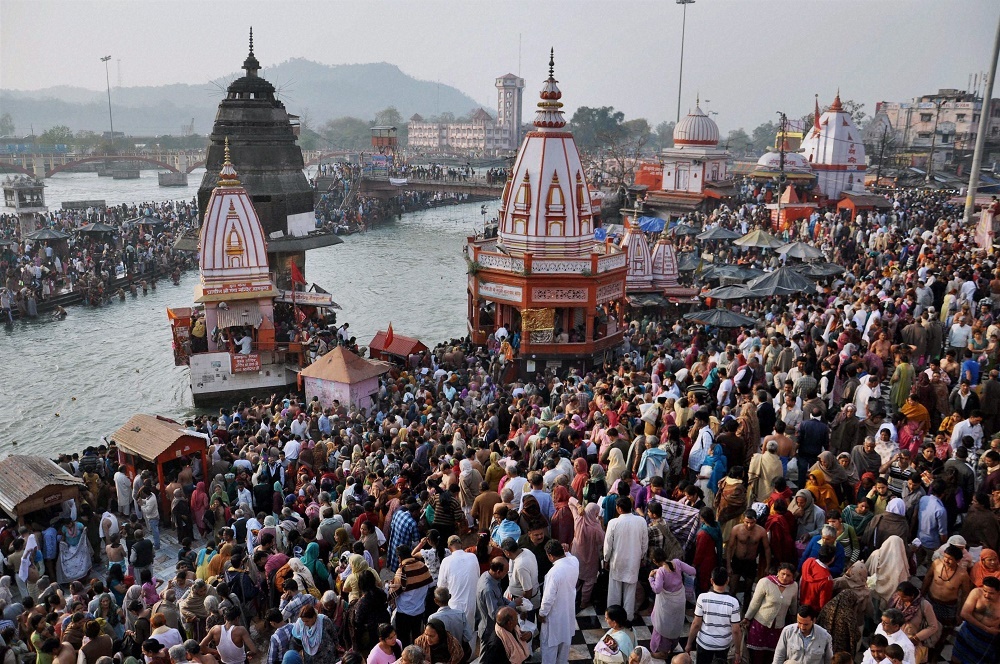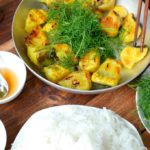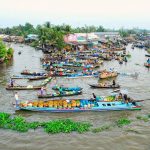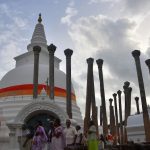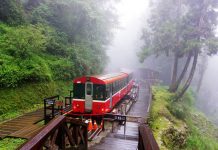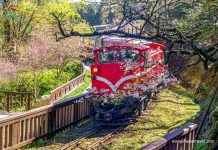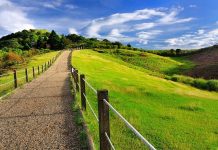The Mekong Delta, in the south, boasts the richest agricultural land in Vietnam as well as the hottest and most even climate. Temperature in the summer range to 38 degree Celsius with very humidity and in the winter season the lowest is in the high of 23 degree Celsius. The delta is covered with green rice paddies and orchards coconuts, mangoes, pineapples, bananas and oranges. The Mekong River is offered to as the “a mystic dragon with nine tails”. This river which is a braid of nine branches by the time it reaches the Mekong Kampuchea. Most Vietnamese call it “Cuu Long” – the river of Nine Dragons – which protects communities as well as isolating them. Now the area, one of the rice bowls of Vietnam which has experienced more than its fair share of savagery, welcomes visitors from all over the world. Visitors may enjoy various fruits grown. Tourist can arrange tours to Mekong Delta all year round including the rainy season (from April to November). Let’s discover the beautiful land through this Mekong Delta travel guide.
- Mekong Delta travel blog — Beyond rivers of Southwestern Vietnam
- Top 10 outstanding Vietnamese coffee shop you must-visit when traveling to Vietnam
- 5 exciting things to do in Hoi An that visitors usually miss
- Visiting 3 attractive Mekong Delta ancient houses
- Banh Mi Phuong Hoi An — The world famous ‘banh mi’ bakery in Hoi An
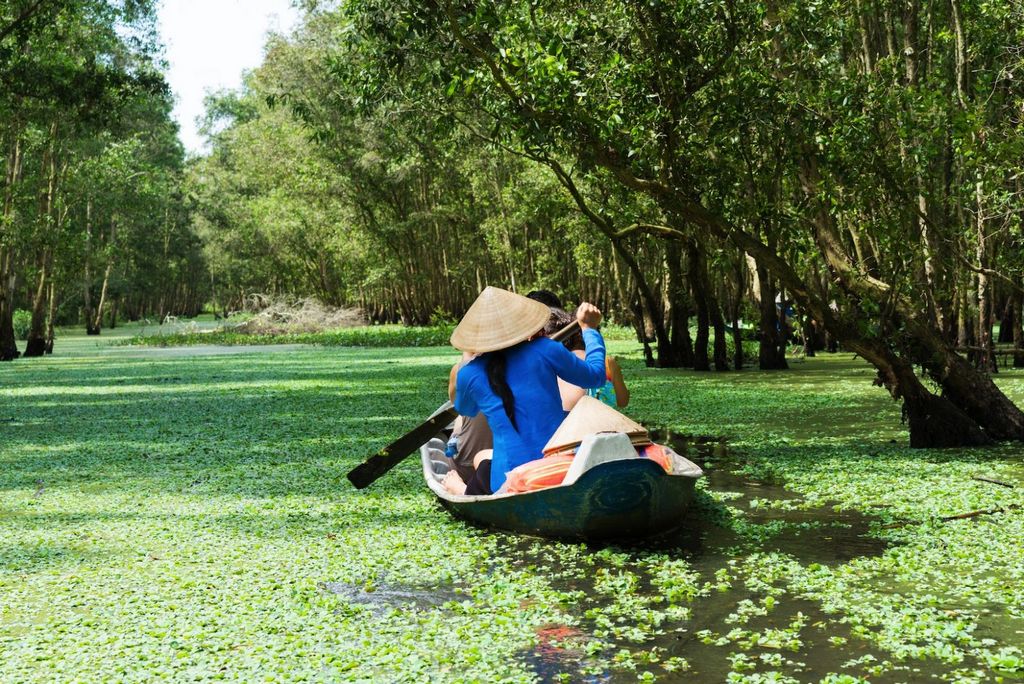
Best time to visit Mekong Delta: The weather of Southern Vietnam is very stable throughout the year with the average temperature of 30 degrees Celsius. Although it could be rainy in some months, any day during the year would be great time for tourists to visit Mekong Delta. However, the best time for visiting is between September and November as these months are the floating season in Mekong Delta. This season attracts not only international tourists but also Vietnamese people since there are many interesting things to experience. You can go fishing on a Vietnamese traditional boat with local people, and then enjoy the meal cooked with the fish you just caught.
To have a completely meaningful, impressive trip to the Mekong Delta, tourists should take notice of tourist attractions, transportation, baggage…
The Mekong Delta is like paradise with many rivers (a network of distributaries from Mekong river), which has attracted tourists from all over the world, and whoever has visit this paradise will certainly never forget the beauty of nature as well as of the culture and people here.
The special features of the Mekong Delta engraved on tourists’ minds are the peaceful country roads with immense paddy fields, the swamplands and the lullabies echoing in people’s heart.
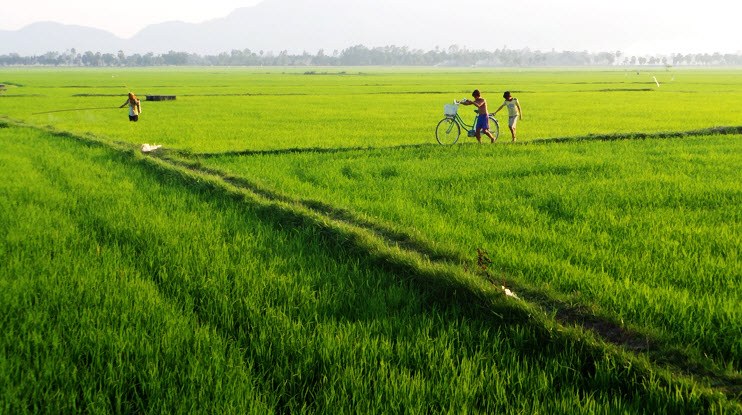

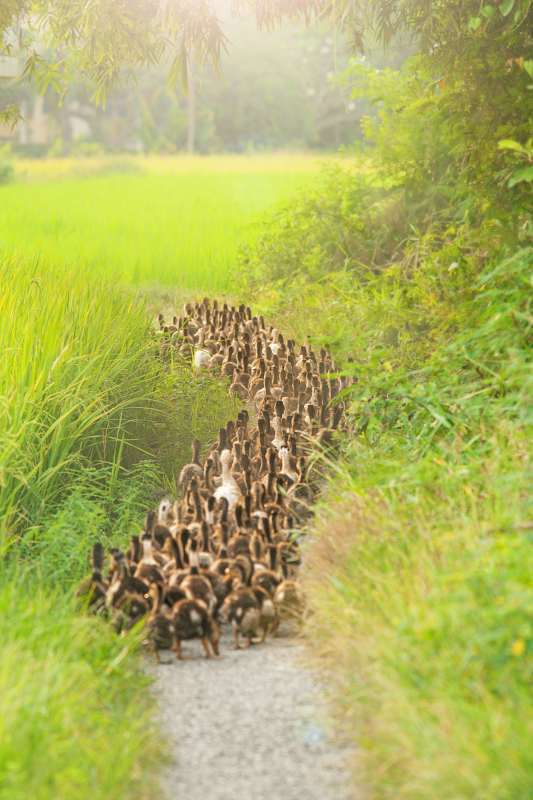
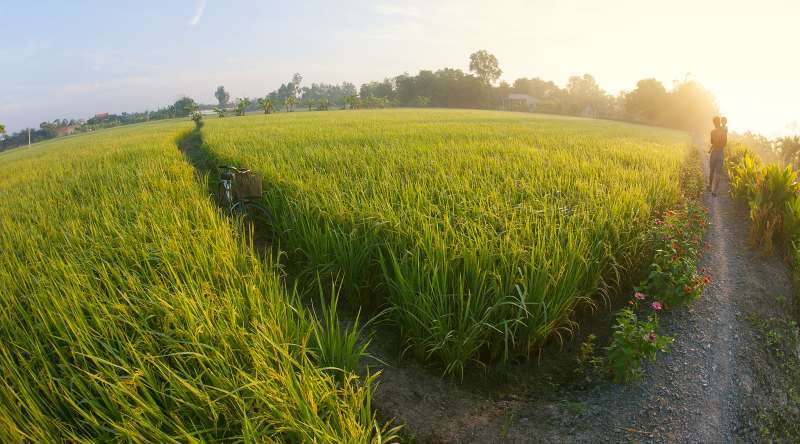
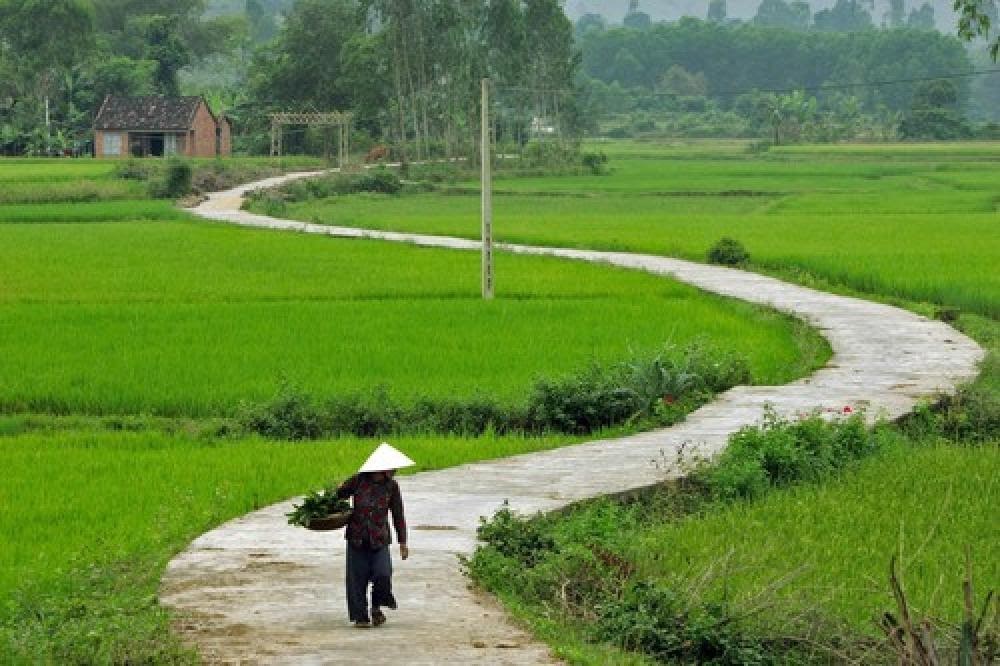
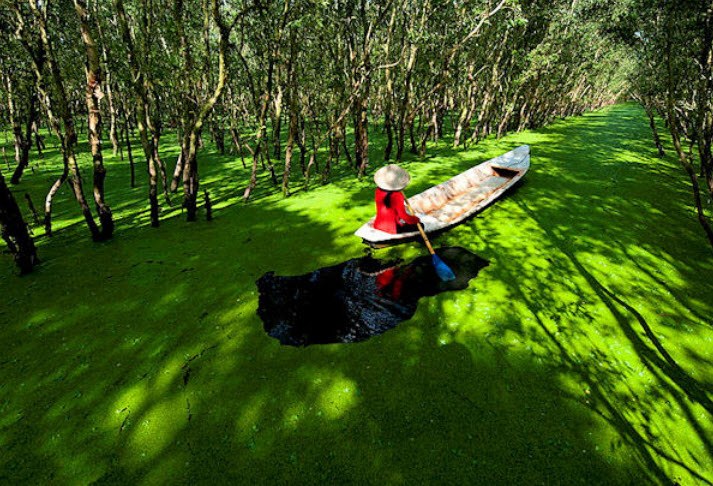
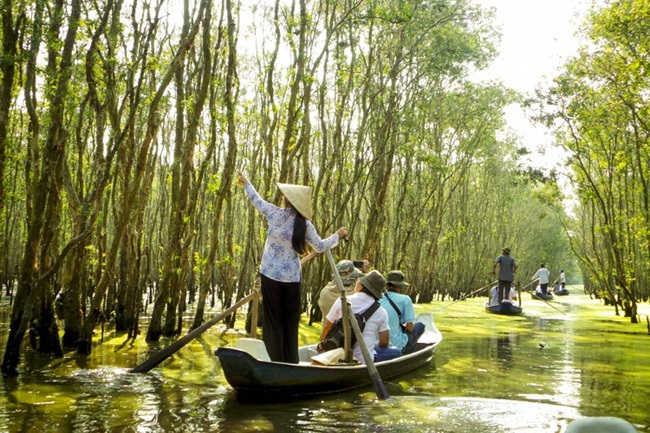

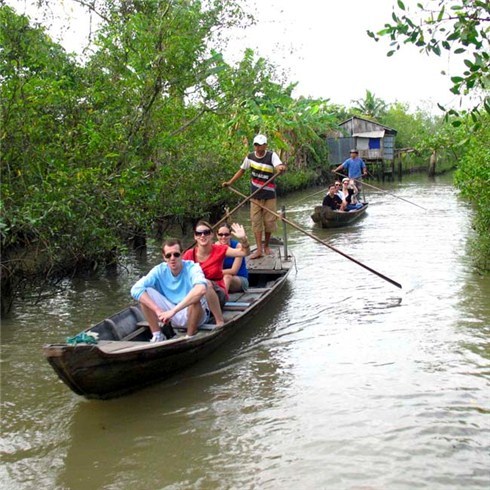

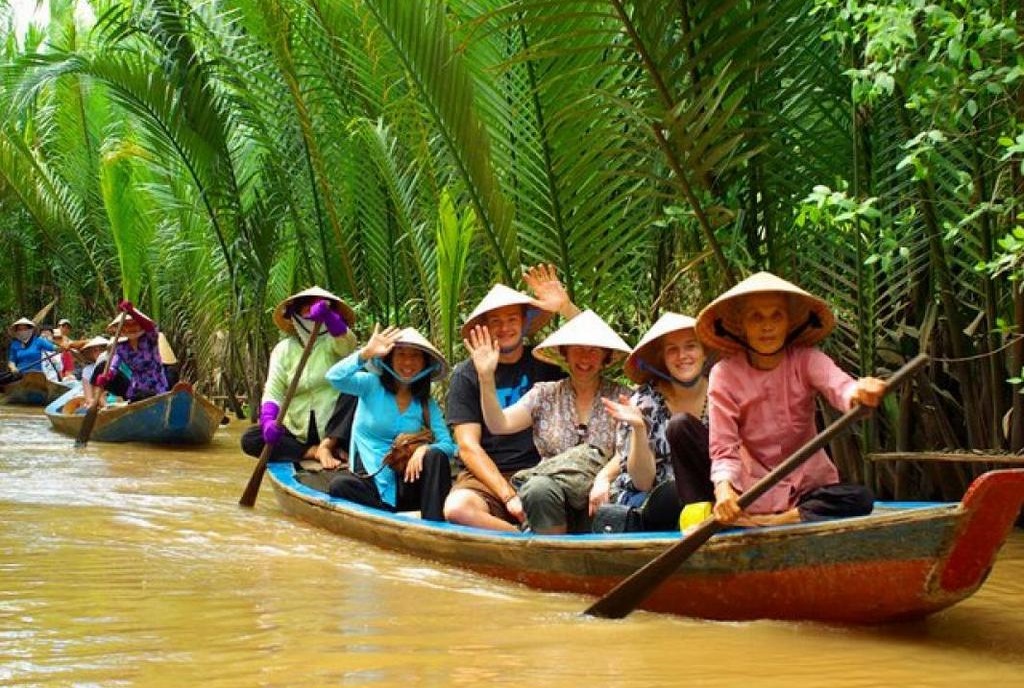
Especially, the fruit gardens here also leave strong impression on tourists with famous fruits such as durian, jackfruit, grape, plum…
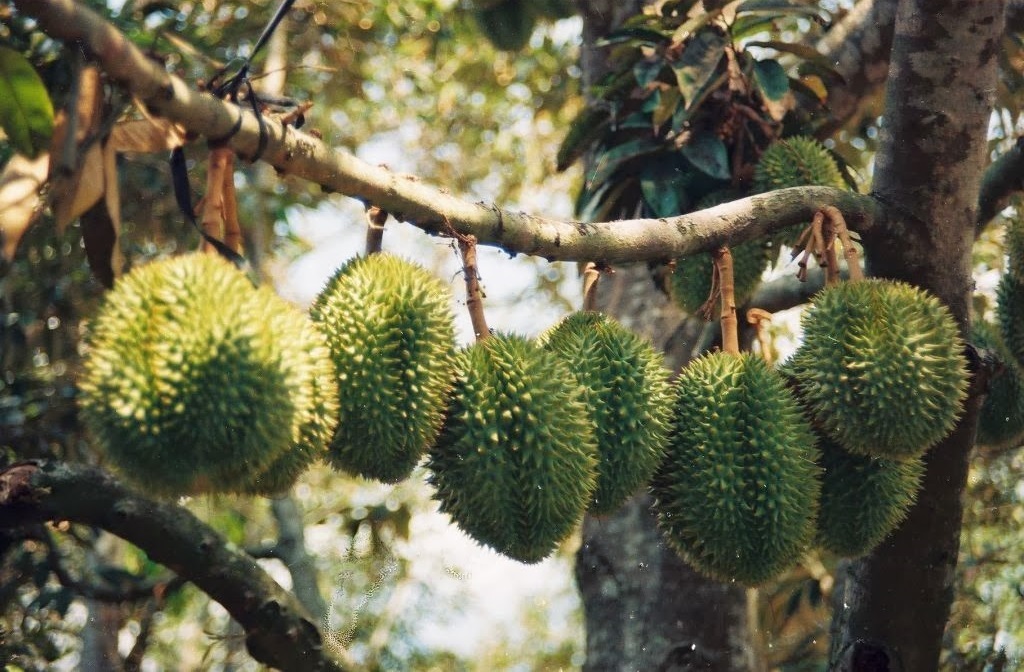
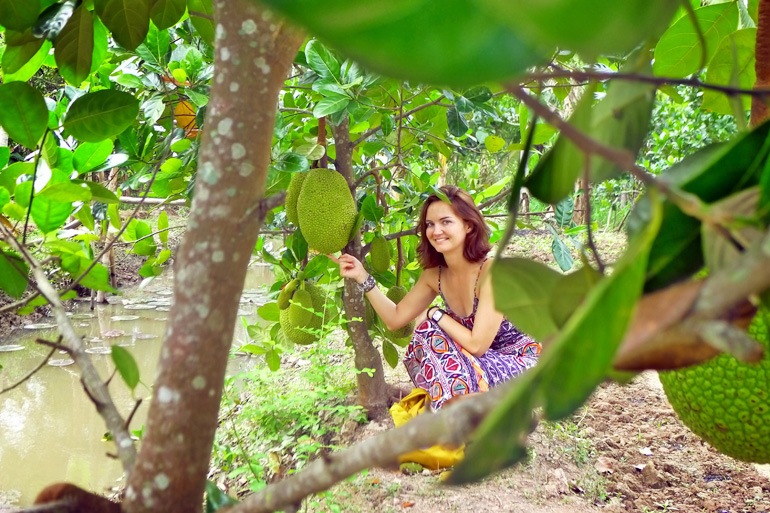
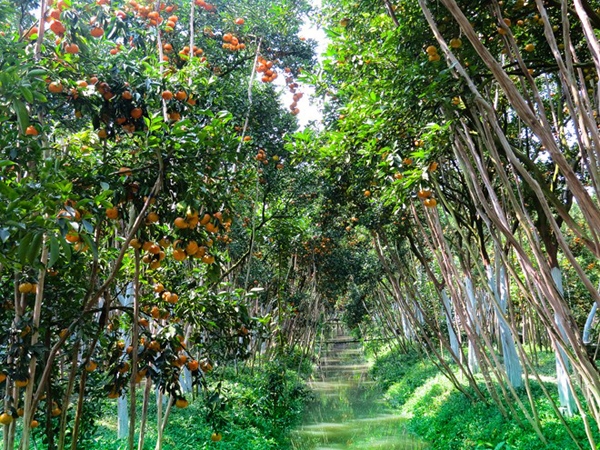
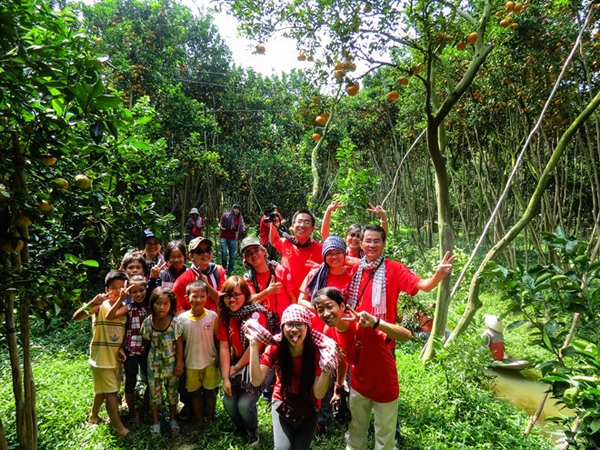
However, to have a completely meaningful and nice trip to the Mekong Delta, tourists should take notice of transportation, baggage, can’t-miss places in this region.
Places to visit when coming to the Mekong Delta
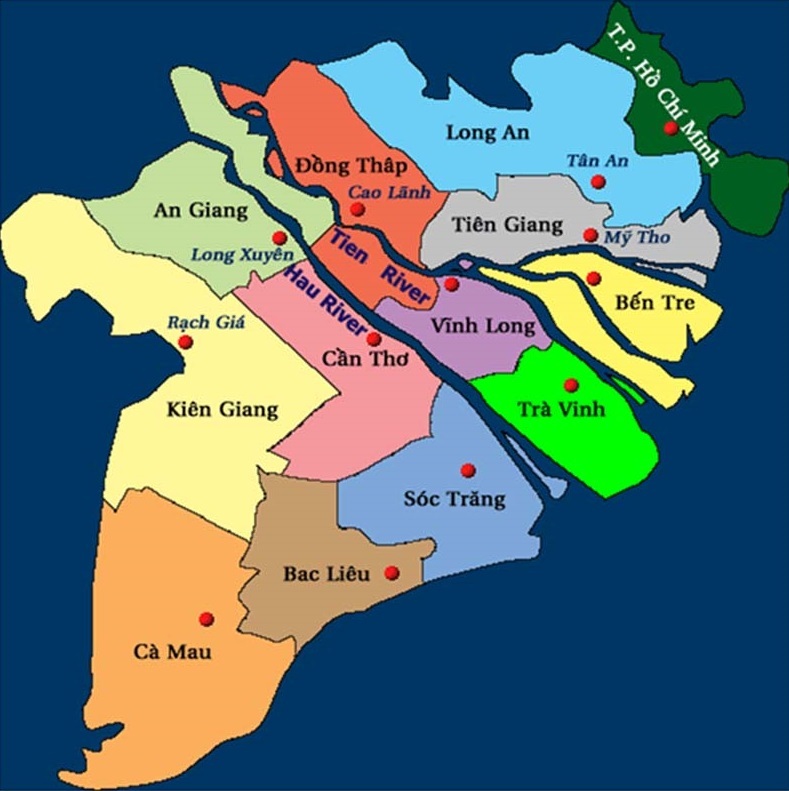
Every province in the Mekong Delta has its own charm, so tourists can satisfactorily travel and explore. If you have chance to come to the Mekong Delta, you should not ignore some destinations listed below.
An Giang: This place is famous for many tourist sites as Sam mountain, Cam mountain (Forbidden mountain) and many special festivals throughout the year.
An Giang is a leading rice producer. The province also has corn and aquatic products such as basa fish and shrimp. An Giang is also renowned for Tan Chau silk, Chau Doc fish sauce and other consumer products. The fabric industry has traditionally been associated with the Cham ethnic group. Famous An Giang festivals include Ba Chua Xu, Chol Chnam Thomay, Dolta festival and ox racing. Among the famous sites and attractions are Sam Mountain in Chau Doc, Cam Mountain in Tien Binh, Tuc Dup Hill, grotto networks of Thuy Dai Son, Anh Vu Son, Co To, and some historical sites.
Getting to An Giang Province: An Giang has a relatively convenient land and water transport system. National Road 91 connects it to Cam-pu-chia. Buses run from Chau Doc to Long Xuyen, Can Tho, and other destinations in the Mekong Delta. Long Xuyen City is 62 kilometers from Can Tho, 125 kilometers from My Tho, and 190 kilometers from Ho Chi Minh City. Chau Doc Town is 96 kilometers from Ha Tien, 117 kilometers from Cantho, 179 kilometers from My Tho, and 245 kilometers from Ho Chi Minh City.
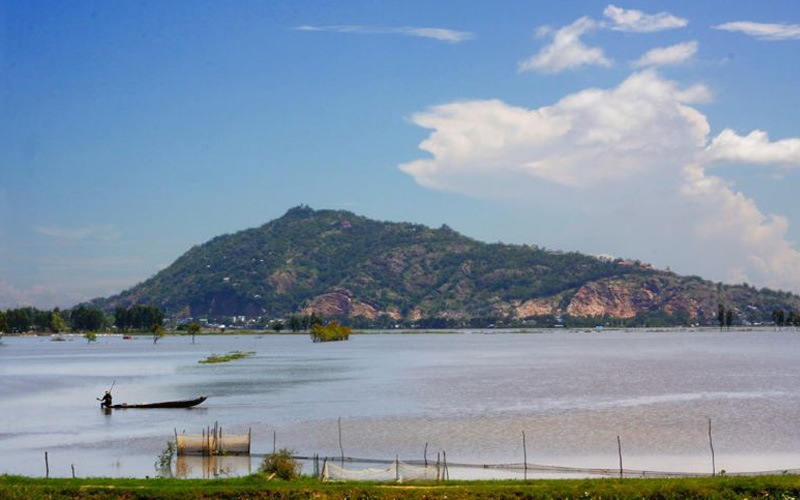
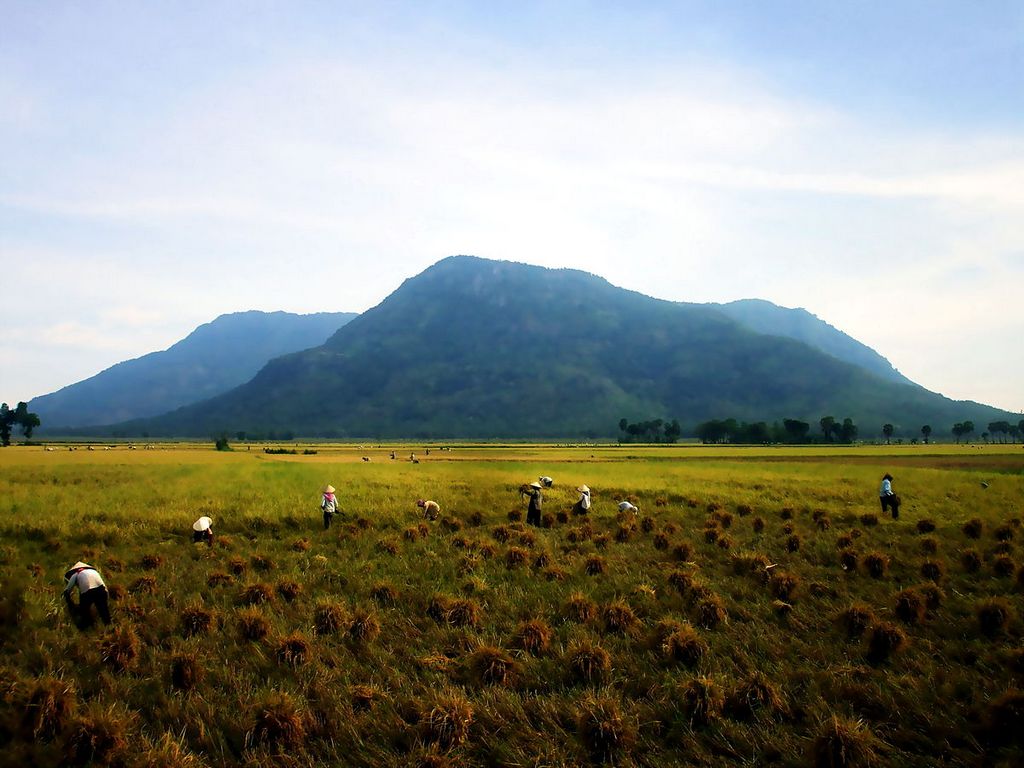
Bac Lieu (Captial City of Ca Mau province): Is where the house of Dasher Bac Lieu, hundred-year-old longan tree roots, Uncle Ho Temple or Bac Lieu bird sanctuary… are.
In the past, Bac Lieu is known as the land of debauchees, and the most popular anecdote of “Bac Lieu dude”, who was very rich and open-handed at that time. This land had attracted many rich landowners at that time. They move there to construct their own residences. Today, tourists visiting Bac Lieu will be impressed by the luxurious and elegant Western-style buildings, which had been constructed long time ago. These buildings include the villa of Bac Lieu Madarin’s son, which stands along the river, and other buildings situated in the Hang Me Park, such as the Administration House, the court, the Bo mansion (the building of the head mandarin), the Son quarter official building, and Dong Trach. Presently, these buildings are used for the provincial Library, the People’ Court of Investigation, and the office for the Bac Lieu Newspaper.
Coming there, tourists also can visit the Bac Lieu Bird Reserve, Vinh Hung Ancient Tower, Xiem Can Pagoda or visit longan gardens and discover mangrove forest.
Khmer people organize Dang Bong Ceremony to raise money for constructions of a brigde, road, school, pagoda, or other public project. Besides, they hold Dang Phuoc Ceremony to commemorate their deceased friends and family members.
Getting to Bac Lieu: Bac Lieu is 280km from Ho Chi Minh City, 67km from Ca Mau, 50km from Soc Trang, and 113km from Can Tho. The National Highway No. 1A crosses the province and links to Soc Trang and Ca Mau province.
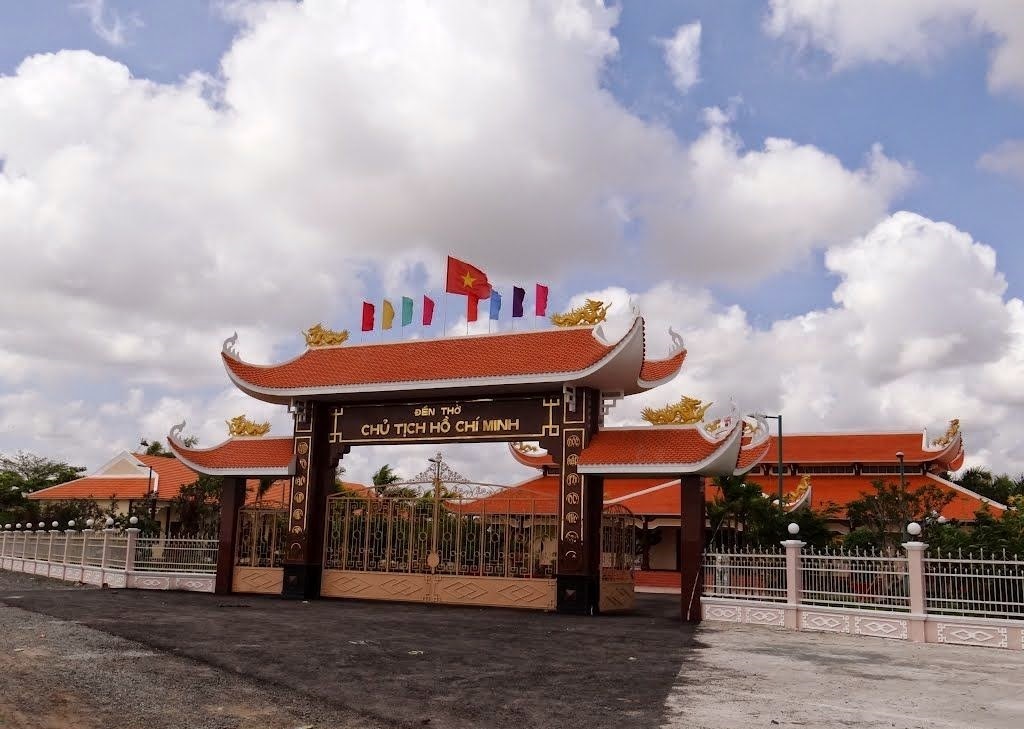
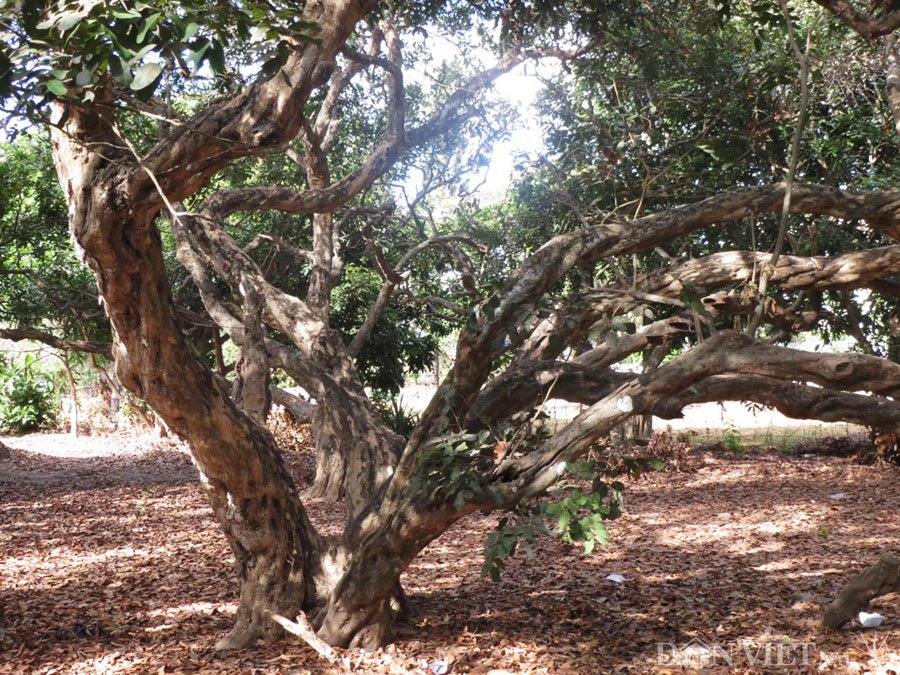

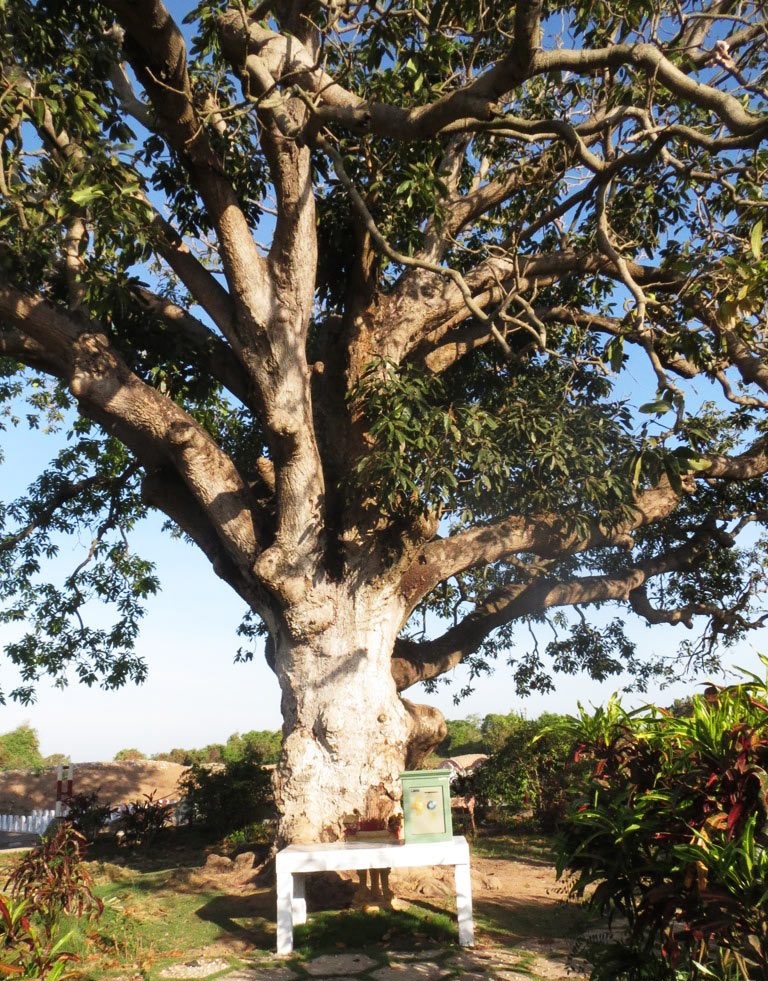
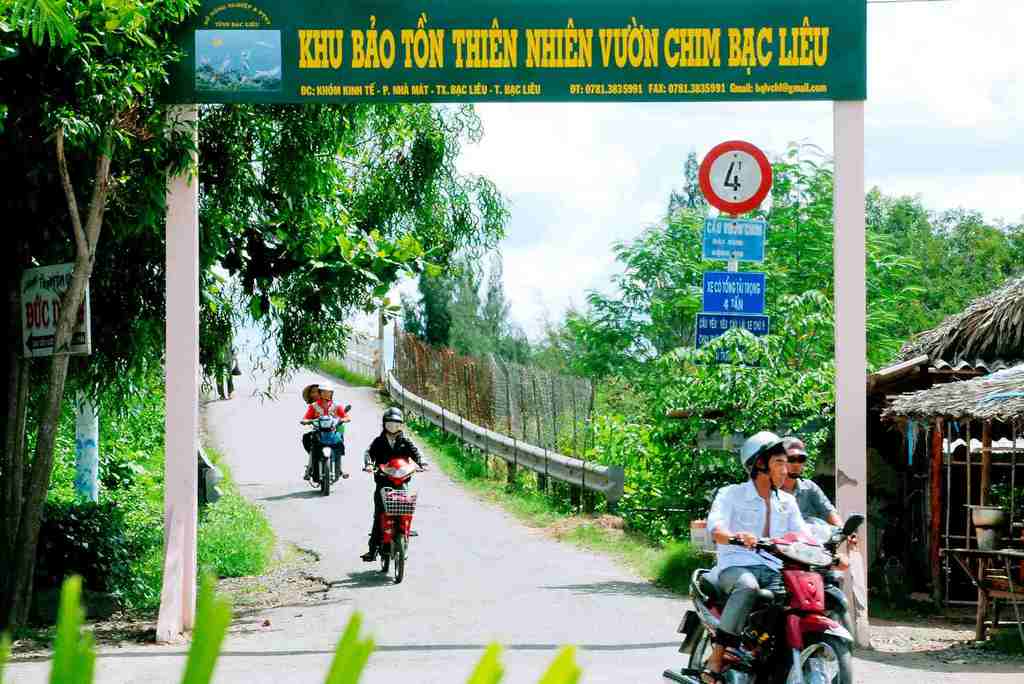
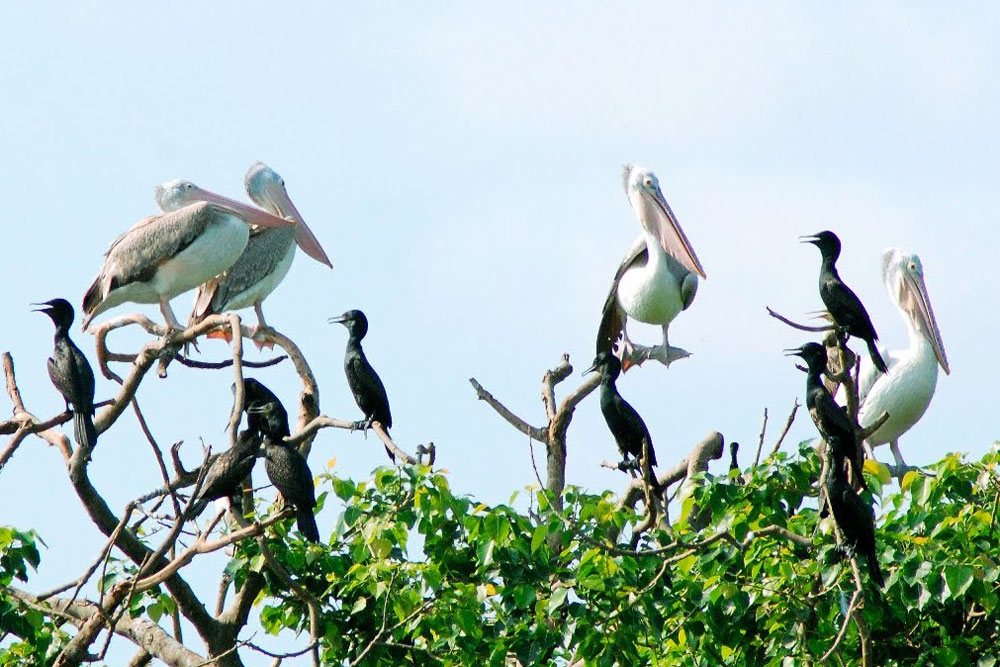
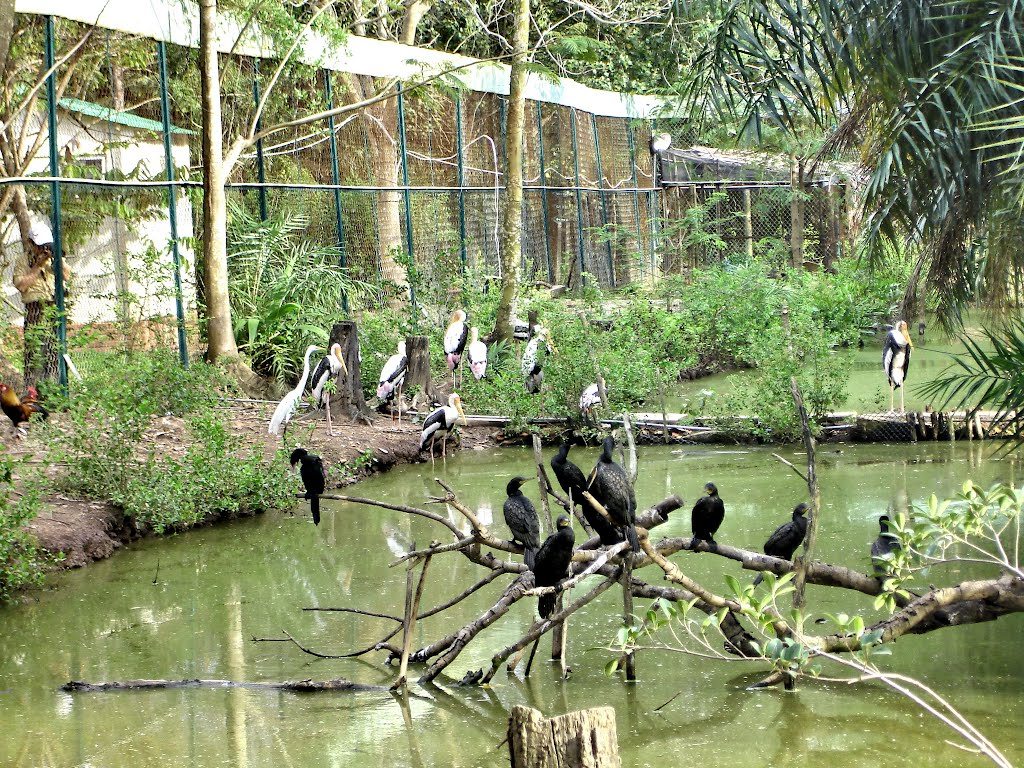
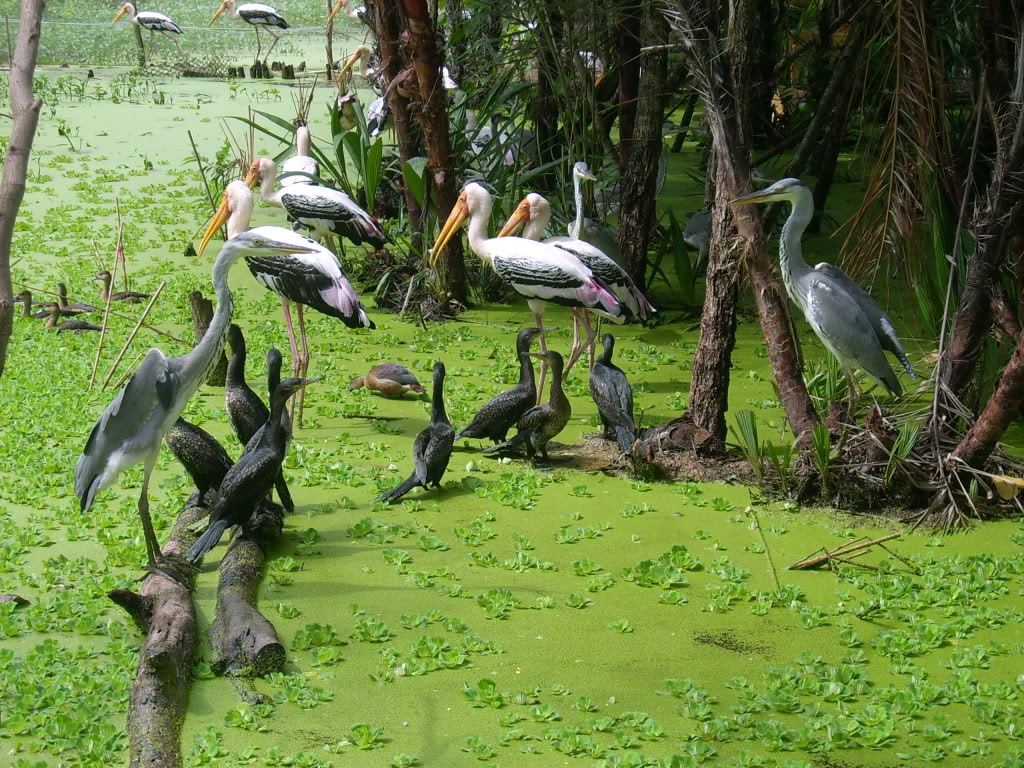

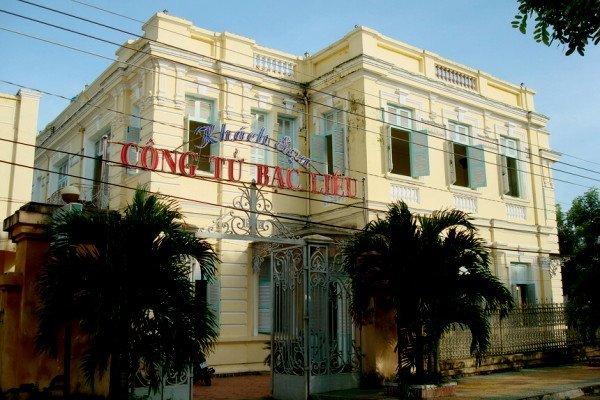
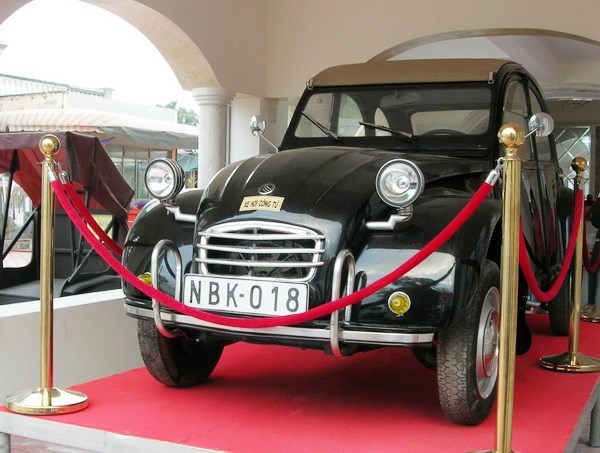
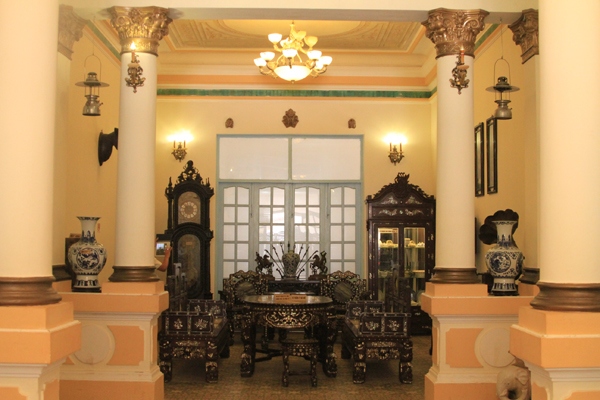

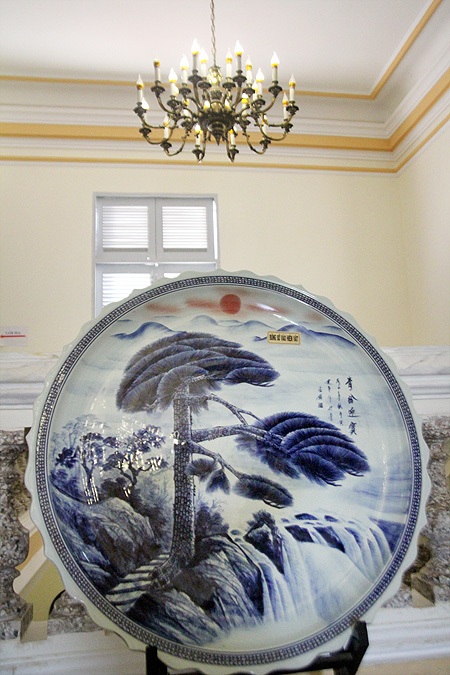
Ben Tre: Also known as “the land of coconut”, this place is famous for vast coconut plantations, there are also many orchards spreading across the district.
Ben Tre, the capital of the same-named province, is made up of three main islands wedged between the Tien Giang River to the north and to Co Chien River to the south with the Ham Luong River running straight down the centre. All are effectively offshoots of the Mekong River as it splits out into many fingers before spilling out into the South China Sea.
Famous for its coconut desserts, the province is suitably covered in coconut trees. During the war these coconut trees were used to make coconut oil which was then used as a valuable substitute for kerosene. Verdant and flat, the province is mostly given over to rice and fruit cultivation, though being an island province, fishing is another mainstay of the local economy. Traditional Mekong life is the norm here and it’s a very unadulterated scene — wandering the market, sipping the coffee, doing a boat trip and skipping through the local museum are the main pastimes.
As far as exploring the Delta is concerned, Ben Tre is a dead-end province. Once you’ve experienced all the province has to offer, unless you have your own transport, you’ll need to turn around and head back through My Tho to get any further into the Delta.
This isn’t to suggest Ben Tre isn’t worth visiting — it is. For starters you can do boat trips from here for less than at My Tho and, with its large network of minor canals, there’s a lot of scope for riverine exploration. There’s also a small museum and a pleasing riverfront worth investigating.
First things first — Ben Tre town is clean — it’s as if somewhere between the bridge to My Tho and downtown you pass through a cleanliness vortex — the roads are spotless, the pavements are tiled and smooth and there’s little refuse — even in the market. If you’re on a budget, Ben Tre is a far better base than My Tho — it’s a pleasant enough place, with a small town charm, that makes it an allround reasonable spot for those with enough time on their hands to dawdle slowly through the Delta.
If you do have your own transport, Ben Tre is a good one for just hoping on the bike and going for a ride. Grand and flat with plenty of rice fields to go around, this is a very beautiful pocket of the Delta. Even by Mekong Delta standards, Ben Tre stands out for its verdant beauty, with rice cultivation going on all over the place. From Ben Tre town, cross the river and head east and – just – keep – going. The further you go the prettier it gets and the roads are pretty good and little trafficked. While you’ll need a motorbike to get far, even the immediate surrounds are worth exploring by bicycle. The Oasis hires bicycles by the day and the Hung Vuong rents motorbikes should you need your own transport.
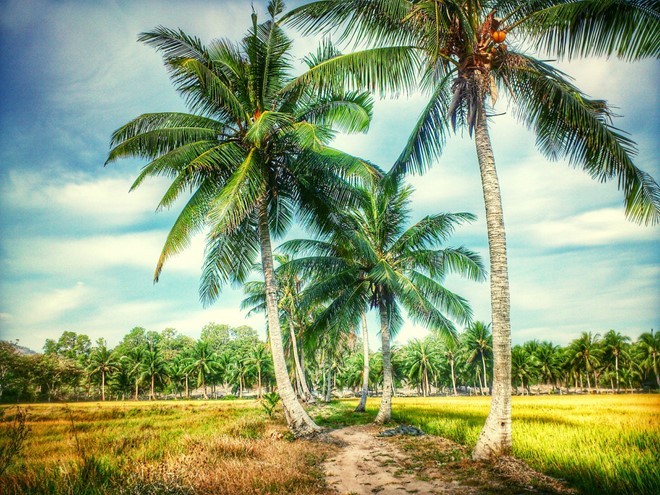

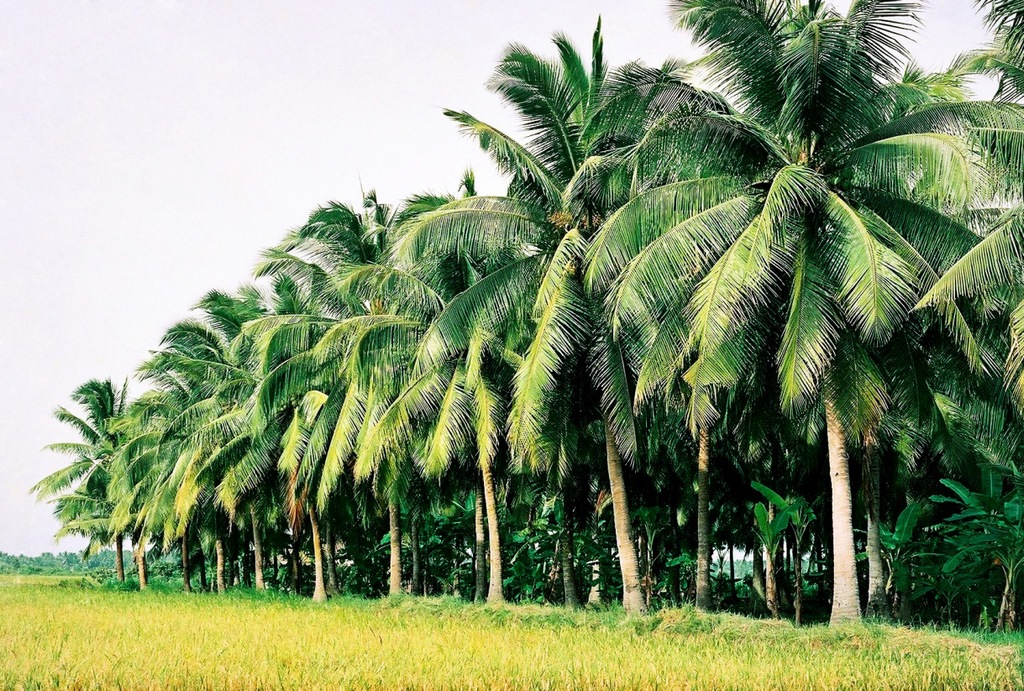
Ca Mau: Is well known for its wild nature, unspoiled scenery and rich culture. The southernmost point of Vietnam is also in Ca Mau. This province is considered as one of the most attractive tourist destinations in the Mekong Delta.
Being the south most in the Mekong Delta, Ca Mau is surrounded by brackish water; the area is home to an abundance of birds and insects which live in the swampy forest. Traveling by “vo lai” along Khmer sampan which reaches speeds of 30km/hour, tourists can visit bird sanctuaries in the cajuput reserve of U Minh or the mangrove reserve at Cape Ca Mau. Camau with its lush tropical rain forest is the perfect place to study Vietnam’s natural landscape and fascinating wildlife.
Getting to Ca Mau: Ca Mau is 114 kilometers from Bac Lieu, 130 kilometers from Rach Gia, 180 kilometers from Can Tho, and 380 kilometers from Ho Chi Minh City. National Highways No. 1A, 63 connect Ca Mau to Bac Lieu and Kien Giang provinces. Boats run from Ca Mau to Ho Chi Minh City, Rach Gia. Tourist can visit U Minh and Ngoc Hien by ferry. Ca Mau Flights From Ho Chi Minh City:, Daily, Vietnam Airlines, 154, 248, 01h50’12 flights/ week, Vasco, 01h00′; Chu Lai, Daily, Air Mekong, 01h40′;
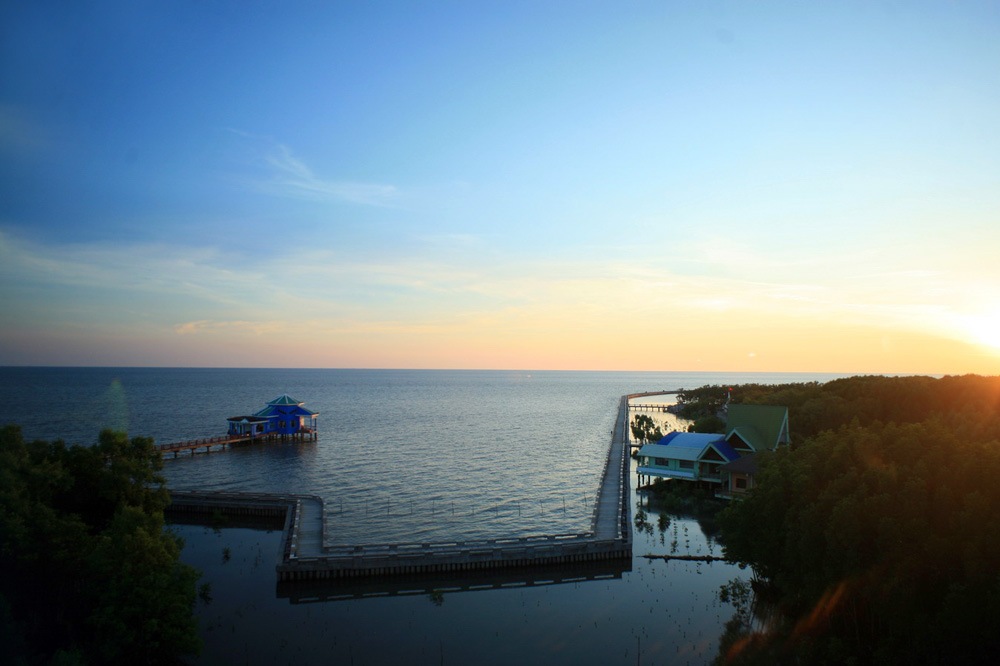

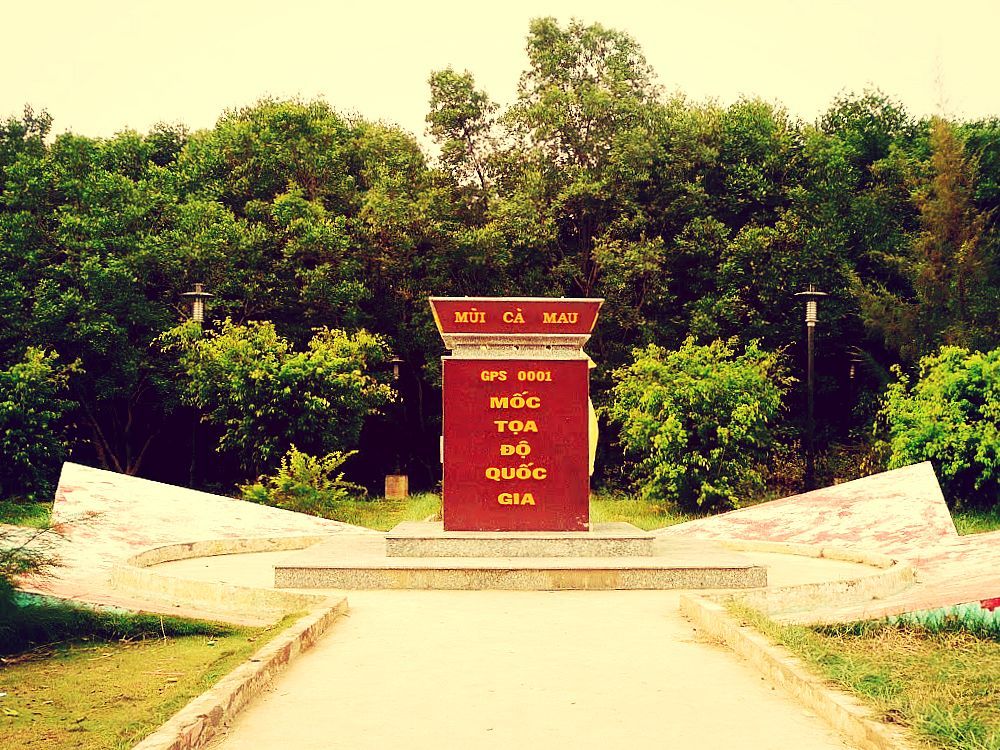
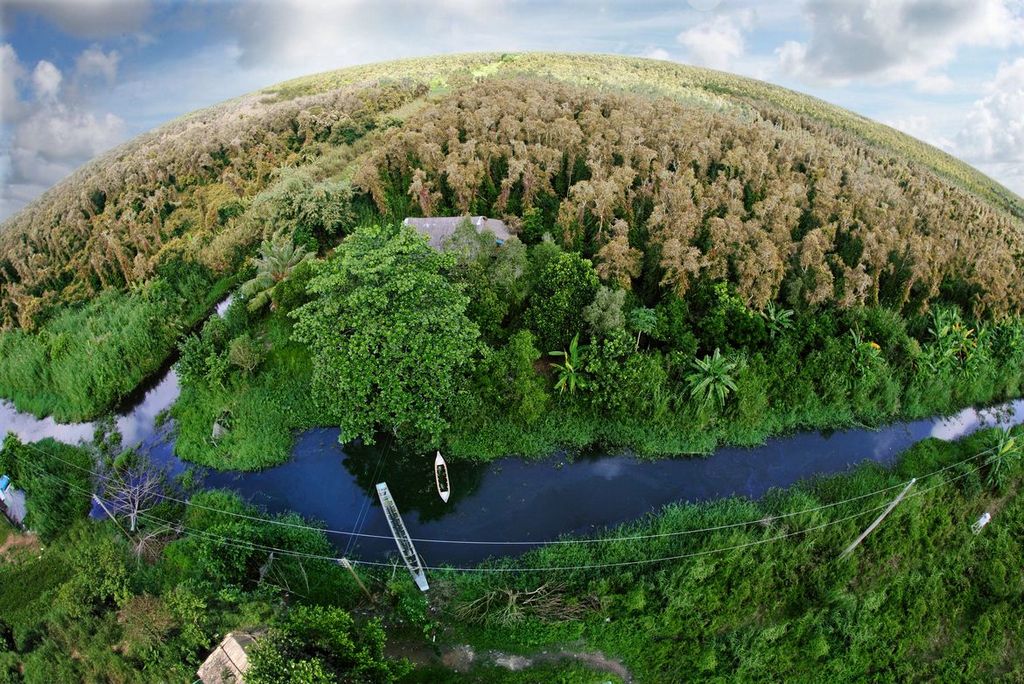
Can Tho: Which is thought of as “the epicenter of the Mekong Delta” because of its interlacing river system, large orchads, vast fields…
Can Tho is about 200 years old. It was once known as Tay Do. The economic life, culture activities of the city are closely related to the river. Canals serve as ‘streets’. It is wonderful to take a boat trip. On the east bank of Hau River is Ninh Kieu Wharf, which is well known for its beautiful location. Other interesting places are Bang Lang Stock Sanctuary, Can Tho and My Khanh Tourist gardens and Can Tho Market.
The capital city of Hau Giang Province, Can Tho is located on the right bank of the Hau River, the lower branch of the Mekong. Because of its cosmopolitan nature and highly successful business ventures, this city was once called the “Western Capital”. It was established towards the end of the 18th century and expanded greatly. Now, it is the political and transportation center, a sprawling mass of rather ramshackle buildings which house its 220,000 habitants. You can take a boat ride on the river for about USD 1/hour and see what the City looks like from the water. It takes about 170 km from Saigon to Can Tho by car or bus.
Getting to Can Tho: Can Tho is 34 kilometers from Vinh Long, 62 kilometers from Long Xuyen, 63 kilometers from Soc Trang, 104 kilometers from Mytho, 116 kilometers from Rach Gia, 117 kilometers from Chau Doc,169 kilometers from Ho Chi Minh City and 179 kilometers from Camau. Can Tho is on National Highways No.1A, 91, 80 linking it An Giang, Kien Giang provinces. Can Tho has Cai Cui international seaport. The city is the center of waterway network of Mekong Delta. There are daily hydrofoils between Ho Chi Minh City and Can Tho City. Bus Station: 114D Cach Mang Thang Tam Road
Can Tho Domestic Airport: Tra Noc Airport. Vietnam Airlines; Sales agent: 18, 20 Hai Ba Trung Street, Tel: 3821 853 / 3821 804; Chu Lai 84 – 510; Flights From Hanoi: Daily, Vietnam Airlines, 759, 1,221, 02h10′; Flights From Ho Chi Minh City: 5 flights/ week, Vietnam Airlines, 81, 130, 00h45′; Flights From Phu Quoc: 5 flights/ week, Vietnam Airlines, 123, 198, 00h45′.
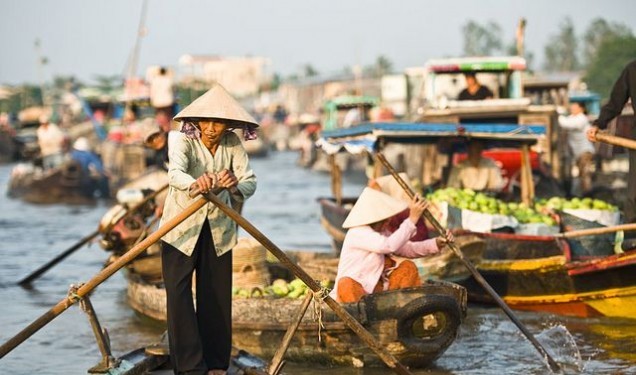
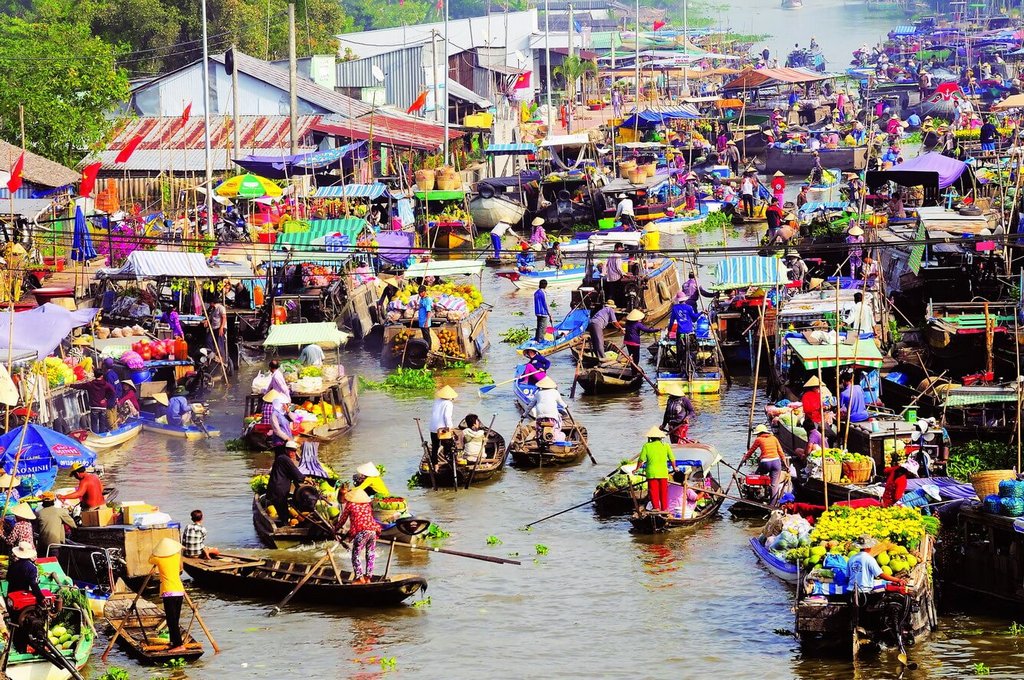
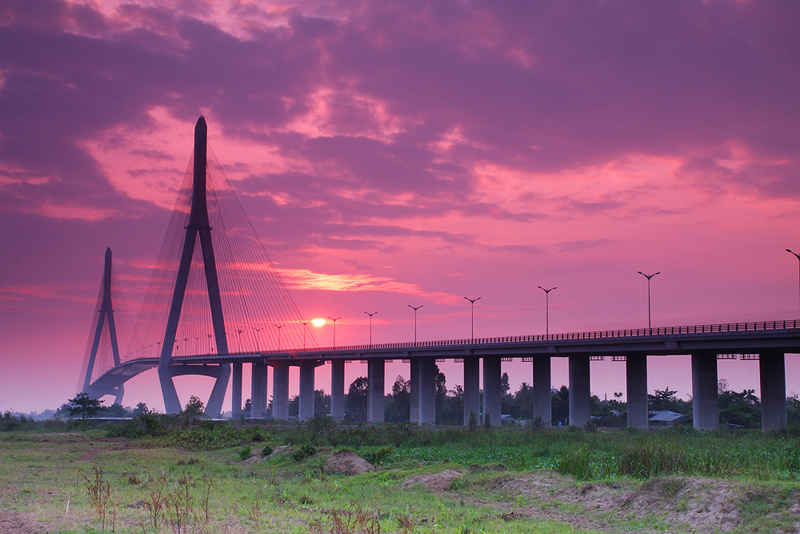
Dong Thap: In the cool and fresh air of the fertile rice fields, you can sit on the sampans to get to Mr. Nguyen Sinh Sac Memorial Site, Go Thao historical site…
Another interesting place in Mekong Delta is Dong Thap with its capital of Cao Lanh at 145 km from Saigon. This province is the home of nearly 150 species of bird. 15 of which are considered rare and precious, especially flamingoes (called red-headed cranes by the locals). You will enjoy the wild maiden landscape of this province in visiting the national reserve of sarus red headed cranes (in February, March and April) and a sanctuary for thousand of stocks; cross immense rice fields flooded by Mekong swelling water; visit boundless cajuput forest and pink lotus ponds. Also belonging to this province is Sa Dec, a town lately made well-known by a French film “L’amant” (the Love).
Tram Chim National Park (1 kilometers from Tram Chim Town in Dong Thap Province) is in the lowest area of the Mekong River in a water logged-plain, submerged much of the year, and in the center of Dong Thap Muoi. Situated in the Communes of Phu Duc, Phu Hiep, Phu Tho, Tan Cong Sinh in Tam Nong District, the Park has a forest of Cajuput and hearth and is home to many kind of birds. Flora and fauna found in the park includes cajeput, reeds, lotus, water lily, ghost rice, rush, python, turtles, eels, snakes, fresh-water fishes, and water bird such as storks, herons, spot-billed ducks, water chickens and especially red-headed, bare-necked cranes which appear in dry season from January to May.
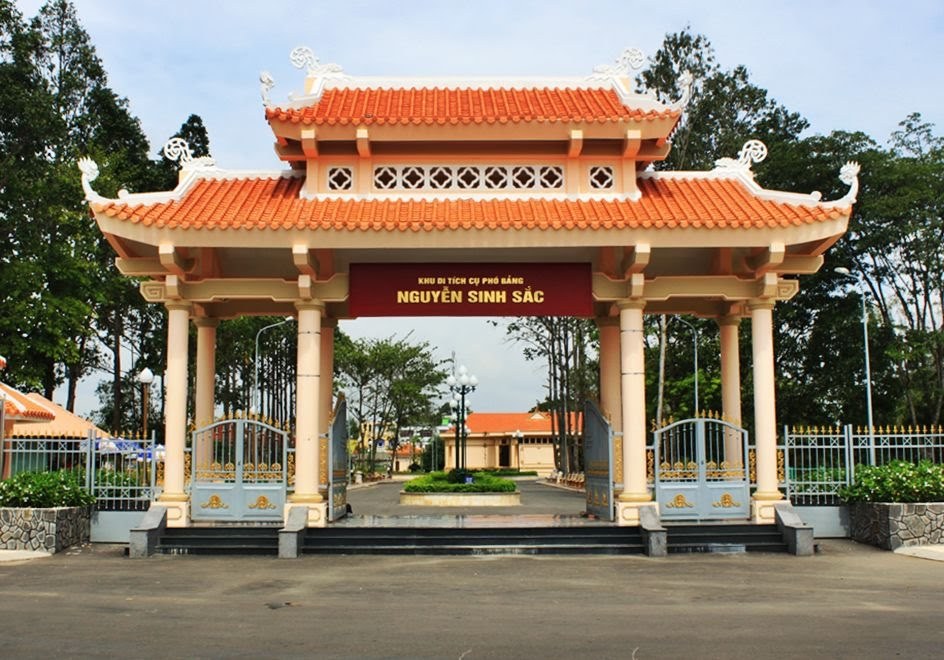

Hau Giang: With plenty of famous tourist attractions, like Phung Hiep floating market, Long My historical site…
Hau Giang is also proud of the Historical Site of the Provincial Party Committee’s Base and Long My Historical Site. Long my Historical Site is about 60km southwest of Can Tho City. Two hundred years ago, it was a forested land. In 1920, it was reclaimed to become now a well-off rural area. During the two resistance wars, Long My was the revolutionary base of Hau Giang and the western part of South Vietnam. Many fierce battles took place there. Long My has a complex in which tourists may find many interesting things about the glorious history in the two resistance wars. There are also facilities for entertainment and recreation. In Long My one should not forget to drop in the stork sanctuary in Xa Phien Commune. Having been established in 1986, the sanctuary now boasts tens of thousands of storks of various types and 30 typical species of birds in South Vietnam. The climate is harmonized with few of storms. It is hot, humid all year. Rainy season lasts from May to November, and dry season lasts from December to April. The annual average temperature is 27oC.
Upon arriving in Long My, tourists may visit the temple dedicated to Uncle Ho in Luong Tam Commune. Uncle Ho Temple Festival is organized twice a year in memorizing President Ho Chi Minh.
Getting to Hau Giang: National Highway No.61 links Vi Thanh City and Can Tho City, Kien Giang, Bac Lieu. Vi Thanh City is 60km from Can Tho.
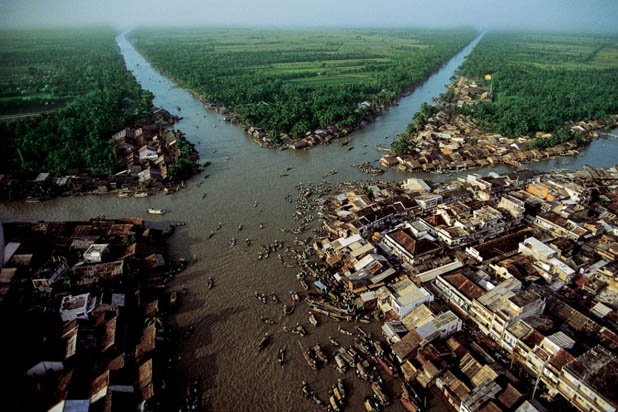

Vinh Long: Is where tourists get to experience the feeling of sitting on a boat floating on the water, surrounded with the color green of the coconut trees and of the lush orchards laden with fruits… The quiet peaceful setting here will make tourists’ everyday worries vanish suddenly.
The provincial capital, easily reached within three hours (140 km) by bus or car from Saigon, lies on the river Co Chien. Lacking character and containing few points of interest, it is still an attractive place where tourists will linger for long. Another ideal place is Tra Vinh where tourists can visit the Khmer people’s villages or their hamlets along route 7A in an easterly direction from Vinh Long until you reach a wide canal, the Mang Tri. Traveling through the province visitors will notice smaller Khmer Shrines dotted around the countryside. Some look very dilapidated but many are still used.
Getting to Vinh Long: Vinh Long is 70 kilometers from My Tho, 34 kilometers from Can Tho and 136 kilometers from Ho Chi Minh City. The inter-province bus station is five kilometers from the center of Vinh Long. There are buses between Vinh Long and Ho Chi Minh City, Can Tho, My Tho, Long Xuyen, Sa Dec, Rach Gia, and other Mekong Delta destinations. National Highway No.1A and No.53 also runs through the province.
Vinh Long (about halfway between My Tho and Can Tho) is a medium size town on the first dragon of the Mekong Delta with an old town on the river, a military museum and a beautiful Confucian Temple (Van Thanh Mieu Temple). Trips can be organized on charter boats to lovely islands in the Mekong River. The ferry where Marguerite Duras’ heroine in The Lover met her Chinese lover was in this area but no longer exist. It was replaced in the early 2000s by a new bridge. Duras grew up in Sa Dec, a sleepy town with some colonial vestiges about 20 miles away.
Cai Be Floating Market (one hour from Vinh Long) is held where the Tien Giang River forms the border between the provinces of Tien Giang, Vinh Long, and Ben Tre. Approximately 400 to 500 boats filled with fruits, vegetables, and other products are anchored along the banks of the river, from 5:00am to 5:00pm everyday. The merchandise sold in each boat is hung on a pole in front of the boat to attract customers.
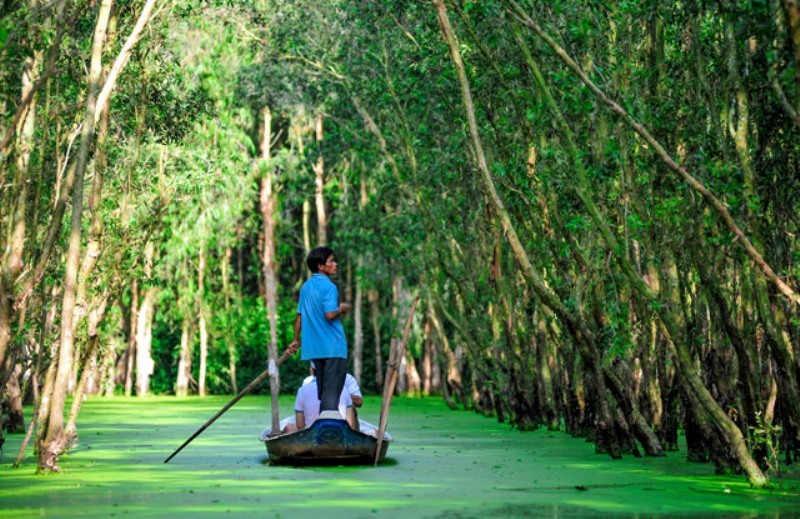
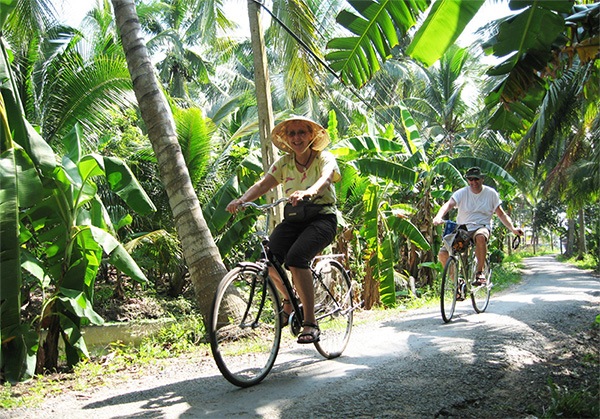
Tien Giang: Here there are not only many fruit gardens along Tien river, in Dong Thap Muoi wetland area (also called the Plain of Reeds), in coastal area of Go Cong district but also lots of tourist attractions such as Thoi Son islet, Cai Be floating market…
Located to the North of the Mekong Delta, along the North of Tien River, Tien Giang Province shares border with Long An Province on the north, Dong Thap Province on the west, The South China Sea on the east, and Ben Tre Province on the south. The Tien and Vam Co Tay rivers with Soi Rap, Tieu, Dai river mouths are good for aquaculture. The terrain is divided into distinct three regions: fruit-growing areas along the bank of the Tien River, plains and seaside. The dry season lasts from December to April next year. The rainy season is between May and November. Annual average temperature is 27 degrees C.
Tien Giang aquaculture and fish life includes freshwater fish, brackish fish, and saltwater fish. Some of special fruits are the Trung Luong plum, Vinh Kim star-apple, Cai Be guava, sweet mango, rambutan, and thick-skinned orange. Many fruits, vegetable, and other products are sold at the lively Cai Be Floating Market and on Tan Phong Island, along the Tien Giang River. Visitors also enjoy picking fruit and experiencing the life of Mekong River Delta community in orchards of Thoi Son Island. Located 120 kilometers from Mytho City, Dong Tam Snake Farm is an interesting place to see snake, bird and mutant turtles. Vinh Trang Pagoda owns many precious wood statues and beautiful tree in large garden.
Getting to Tien Giang: My Tho City is 70 kilometers from Vinh Long,70 kilometers from Ho Chi Minh City, 103 kilometers from Can Tho City, 179 kilometers from Chau Doc, 182 kilometers from Rach Gia. There are bus connections with Vinh Long, Chau Doc, Ca Mau, and other destinations in the Mekong Delta from Ho Chi Minh City and other places. A high-speed boat leaves from Ho Chi Minh City daily to My Tho and Can Tho. There are also boat tours around My Tho.
Thoi Son Island (a 45-minute boat ride on the Mekong River from Mytho City) is filled with fruit trees bearing plums, mangoes, and longans. Since 1990, Thoi Son has become a tourist resort welcoming hundreds of visitors. The tiled-roof houses surrounded by many generations of fruit-bearing trees, the cozy little restaurants in bonsai tree gardens make of Thoi Son Island the ideal location for a short rest. The path through the island is bordered with fruit trees bearing plums, mangoes, and longans. Visitors will also enjoy Con Phung Island, and coconut sweets and jams.
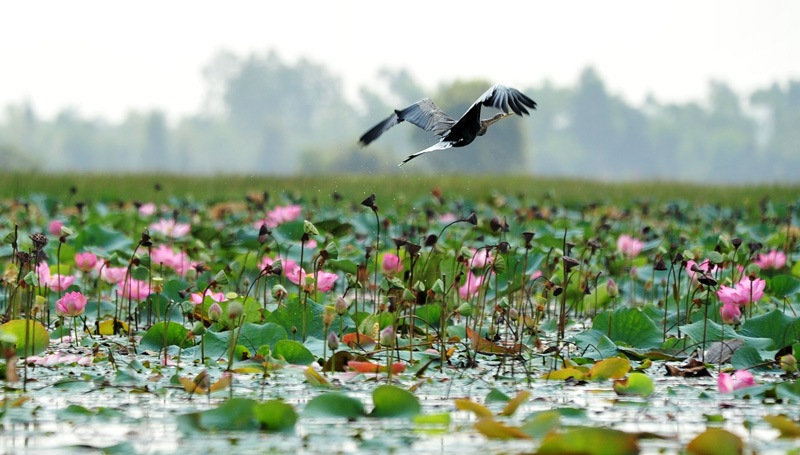
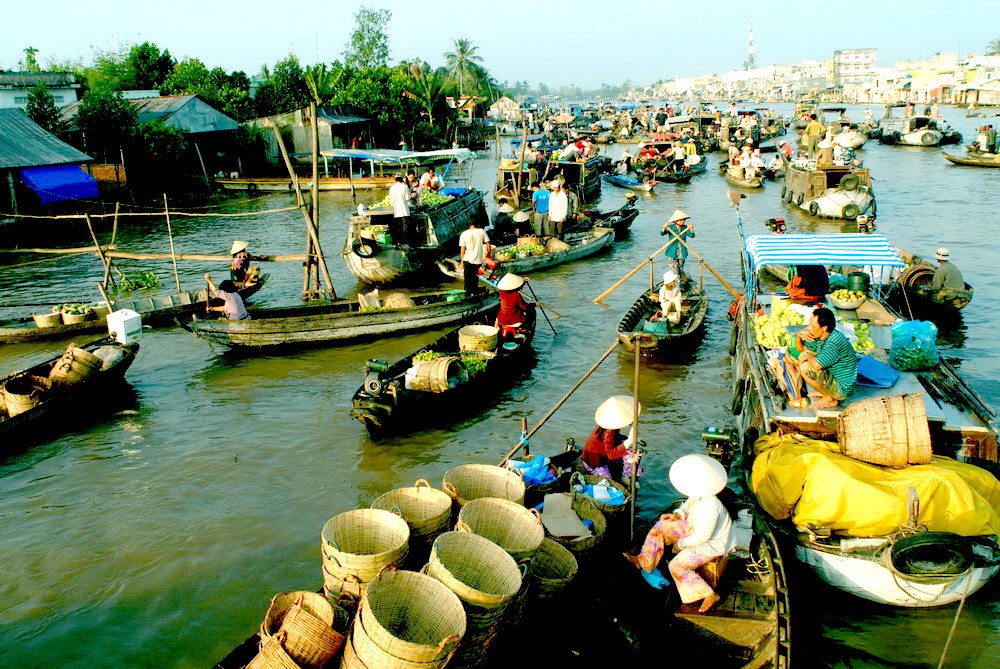
Long An: is where there are many prehistoric monuments and famous monuments like Binh Ta, the Hundred-column House, Ton Thanh pagoda and also where nearly 100 Oc Eo cultural relics have been found.
Dong Thap Muoi (Plain of Reeds), 75 km southeast of Hochiminh City and stretching over 6,000 hectares in Long An Province alone is an area covered by cajuput swamps. It used to be a guerilla stronghold during the Vietnam War. After the war, people displaced by the flights began to come back there in increasing number to start their life anew. The atmosphere is peaceful and quite-away from the noisy chaos of urban life
Coming to Long An, visitors are attracted to Long An by value of Oc-Eo culture that develops on the Mekong Delta from 1st BC to 6th century BC. 12,000 objects of 20 prehistoric monuments and 100 Oc-Eo culture relics have been found there. Beside these, Long An preserves valuable sites including House with Hundred Columns, Rach Coc Fort, Ton Thanh Pagoda. House with Hundred Columns was built in Long Huu Commune in 1901. The architecture and sculpture of the house were realized by 15 clever and skillful workers. The house consists of 68 round wooden columns, 12 square wooden columns and 40 brick columns. The ornaments on the ends of the columns are representations of lush vegetation, including trees, flowers and birds. Rach Coc Fort was built in Long huu Commune in 1903 and is one of the greatest forts in Vietnam. It is 300m long and 100m wide. It has five floors, three of which are underground. Ton Thanh Pagoda is located in the Thanh Ba hamlet of My Loc Commune. Built in 1808 by northern emigrants, Ton Thanh Pagoda is the oldest pagoda in Long An Several valuable ancient statues with its design in 19th century still are remained in the pagoda. Vietnamese poet Nguyen Dinh Chieu lived in the pagoda from 1859 to 1861.
Sailing upstream the Vam Co Tay River, travelers will reach the center of the Thap Muoi Field, the typical eco-tourism site of the lowland in the South. Tourists can see cajuput forests whose aroma attracts herds of bees, and immense ponds of lotuses showing their beauty in sunlight. There are many rare animals such as herons, red cranes, turtles, snakes, and many more.
In drought years, people living in the agricultural production areas of Long An usually organize rain-seeking ceremonies to worship Heaven and Earth in the hopes that they will be granted rain.
Climate: Long An is on tropical monsoon climate. The rain season lasts from May to October and the dry season lasts from November to April next year. Annual average temperature is 27.4ºC. Annual average rainfall is 1,620mm.
Getting to Long An: Long An has National Highways No.1A crossing Tan An Town, National Highway No.62 linking to Binh Hiep Border Gate to Cambodia, National Highway No.50 from My Tho (Tien Giang) to Ho Chi Minh City via Can Duoc Townlet. Long An is 47km from Ho Chi Minh City.
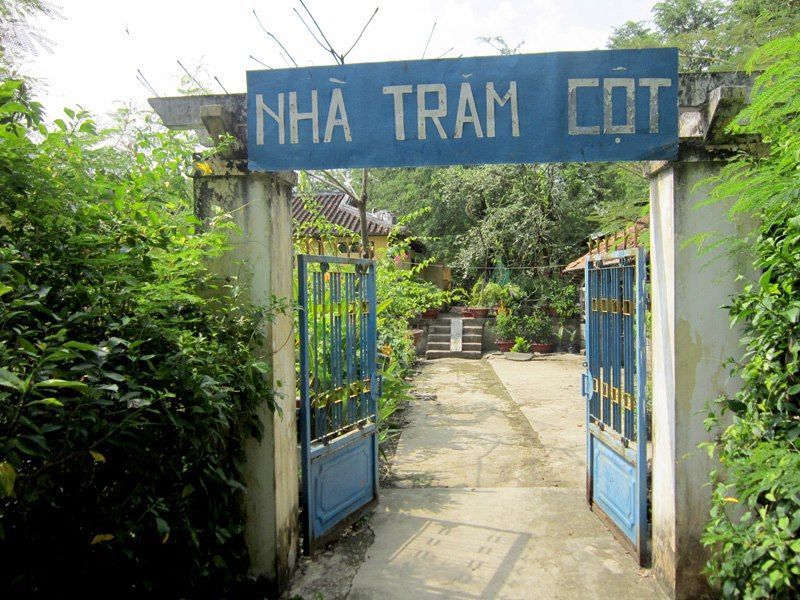
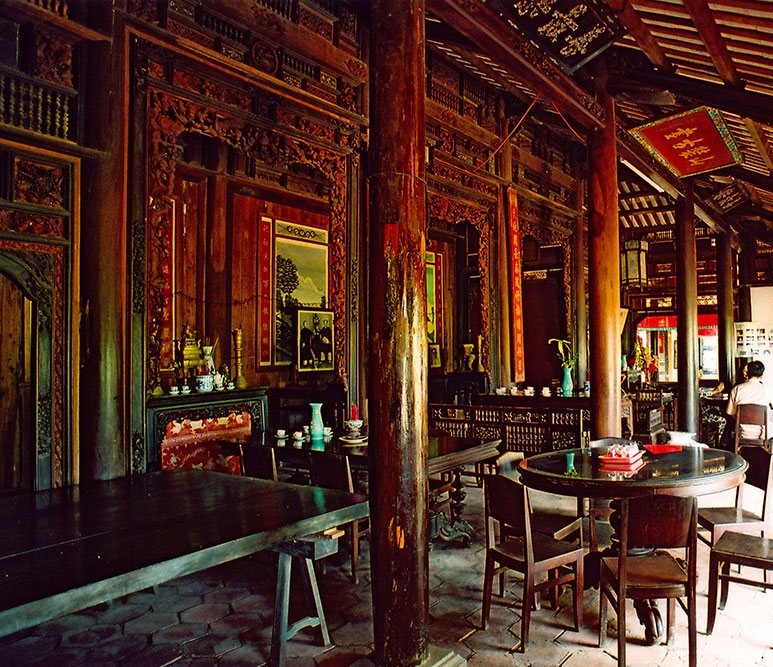

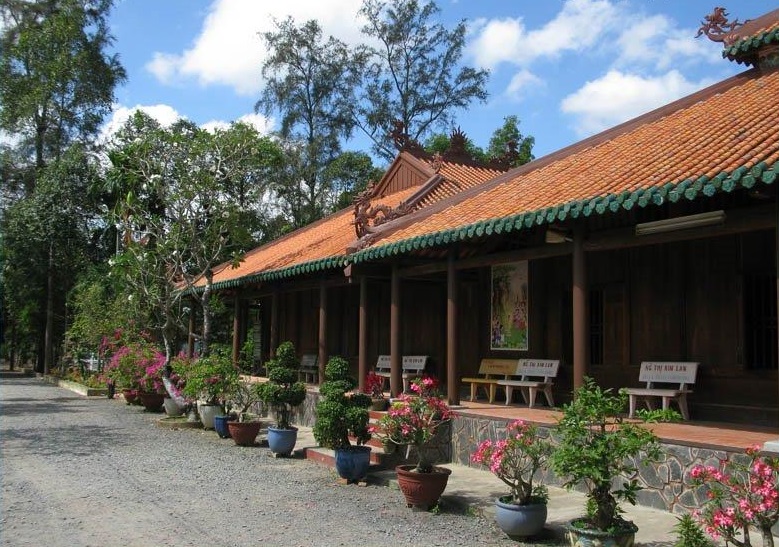
Dishes to eat when coming to the Mekong Delta
In addition to eating fresh fruits in the orchards, tourists should also try delicious dishes in famous destinations in the Mekong Delta.
When visiting An Giang, try ‘gỏi sầu đâu’ (neem salad), snakehead (which is fished in the natural environment, such as rice fields, rivers,…), ‘tung lò mò’ (usually known as Champa people’s sausage or beef sausage), ‘bánh phồng nếp Phú Mỹ’ (plain sticky rice dumpling pancake of Phu My town), ‘lẩu mắm’ (hot pot with sauce of macerated fish),…
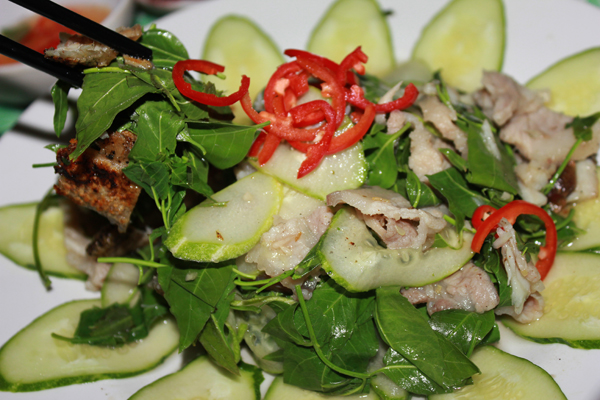
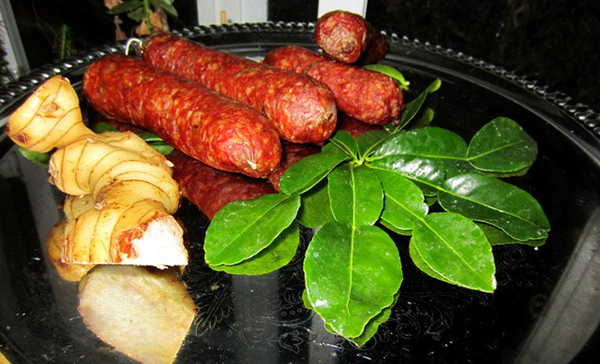
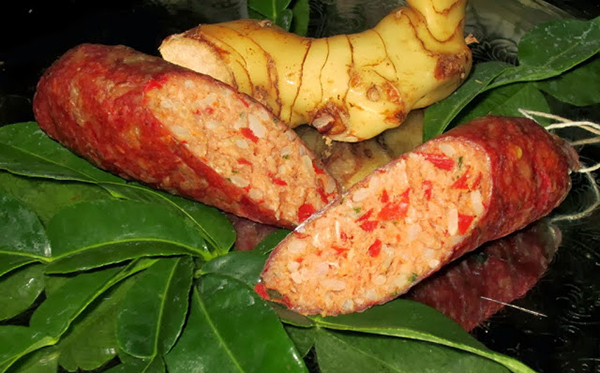

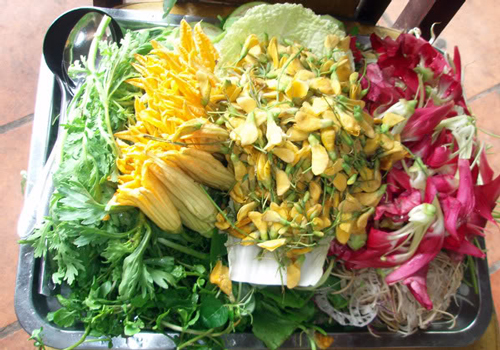
Bac Lieu has ‘bánh củ cải’ (radish cake), ‘bún bò cay’ (spicy beef rice noodles), ‘bánh tằm bì’, ‘rượu nhãn’ (longan wine),…

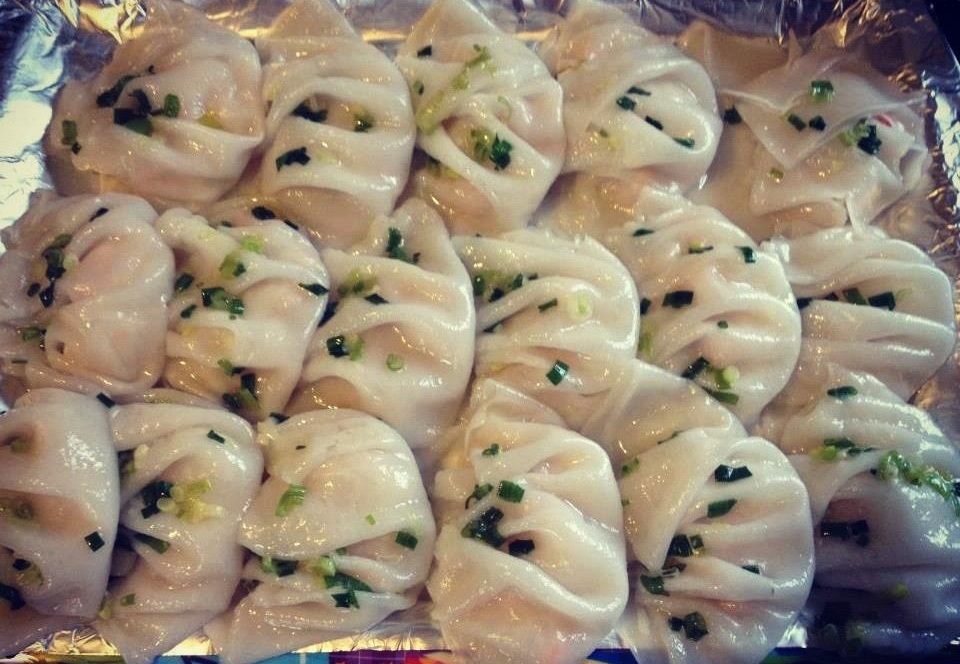
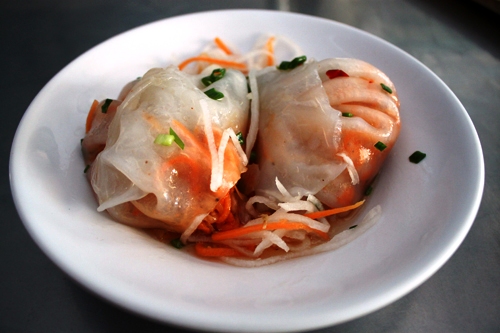
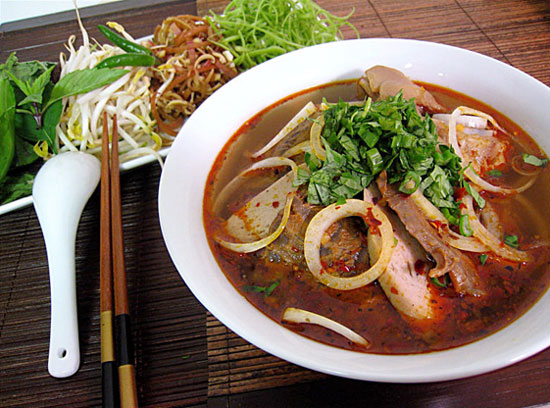
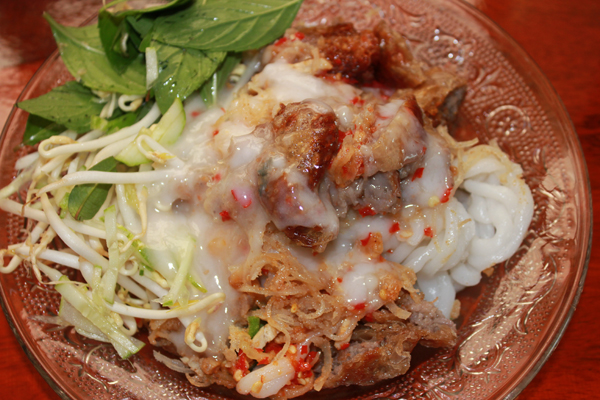
In Ben Tre, tourists should not miss: ‘dừa dứa’ (a type of coconut which has the water having fragrant smell of pineapple), ‘bánh tráng Mỹ Lồng’ (My Long rice paper), ‘bánh phồng Sơn Đốc’ (plain sticky rice dumpling pancake of Son Doc), ‘đuông dừa’, Phu Le alcohol,…
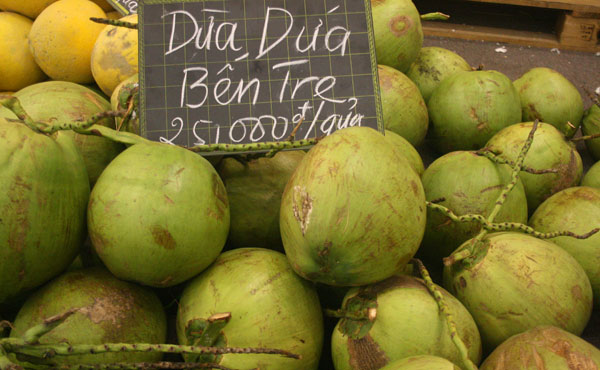
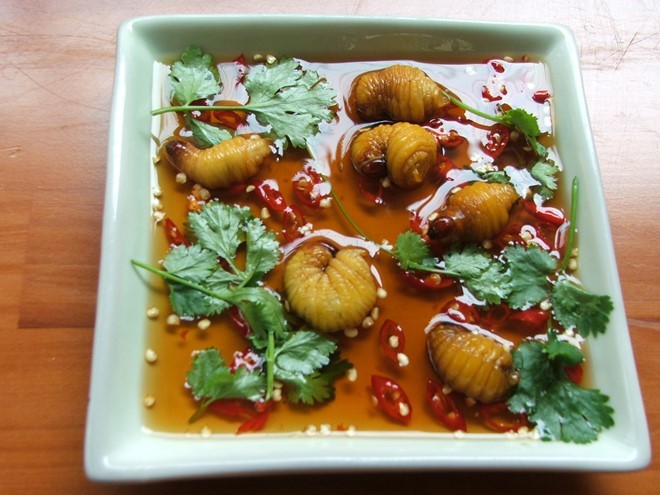
Can Tho with ‘Bánh tét lá cẩm’ (Violet cylindric glutinuous rice cake which is made from fragrant rice soaked with a kind of leaf called Cam), ‘nem nướng Cái Răng’ (Cai Rang grilled meat roll), ‘bánh cống’ (pork meat and shrimp cakes), ‘lẩu bần’ (a special hot pot of Can Tho) will strongly impress tourists trying them the first time.

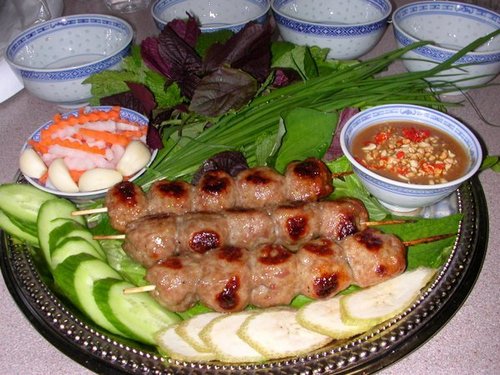
In addition, there are many other dishes, such as: Phu Quoc sim wine, ‘bánh canh ghẹ’ (soup cake cooked with flower crab), ‘xôi Hà Tiên’ (Ha Tien sticky rice), ‘hủ tiếu hấp’ (steamed rice noodles), ‘bún nước kèn’ (trumpet noodles), ‘bún nhâm tôm khô’ of Kien Giang; Go Den alcohol, peanuts, ‘lẩu mắm’ (hot pot with sauce of macerated fish) of Long An…
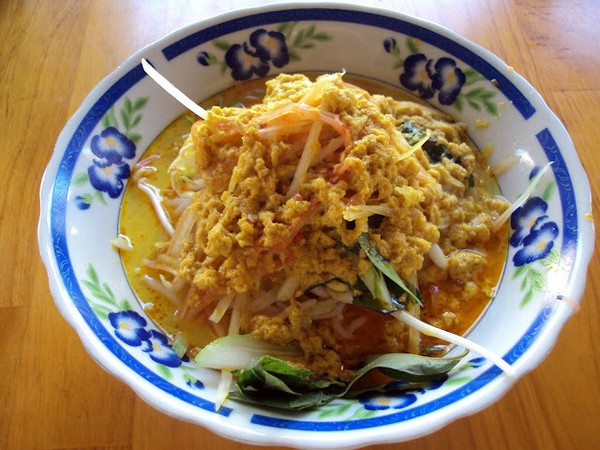
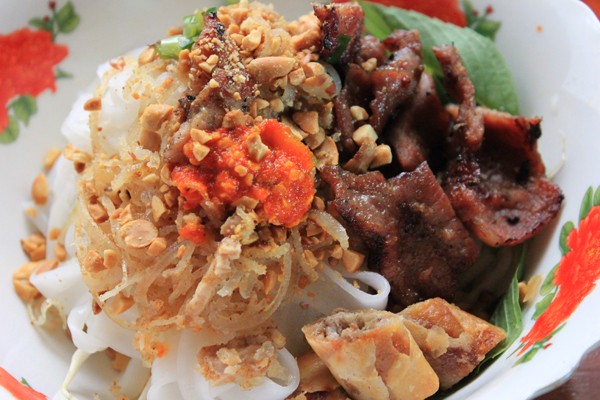

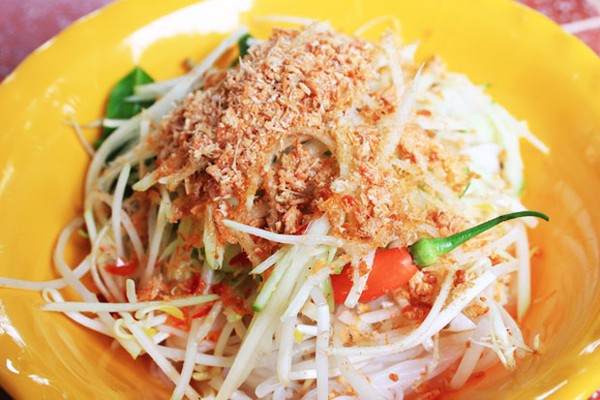
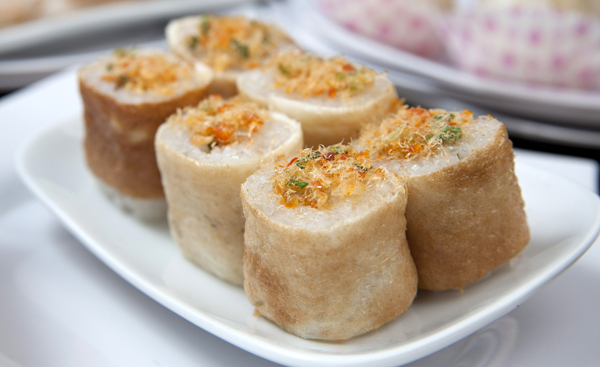
Things to bring with you when coming to the Mekong Delta
If you are going to a wetland area like the Mekong Delta, you should not bring so much baggage and belongings because it will be difficult to move around and because there will be times when you want to buy fruits or specialties.
The baggage should be lightweight as possible and tourists should not bring their expensive personal belongings with them. Technical or electronic items such as camcorder, camera, phone, music player… should be put in the safest place, carefully wrapped with a plastic coating in case they are dropped into the water.
The Mekong Delta has many ATMs for you to withdraw your money, so you should not carry around too much cash in case of theft, just carry enough cash.
The temperature in the Delta is pretty comfortable so you don’t need to bring many warm and too thick clothes, just long sleeves and thin jacket are fine. Avoid wearing clothes having white or bright colors or which are difficult to wash.
Tourists should also choose comfortable shoes which are convenient for moving around and getting on and off the boats, for example rubber sandals, waterproof shoes…
And the must-wear items when floating on the river and traveling the Delta are hat or cap and gauze mask to avoid the sun.

Tourists need to bring mosquito repellent most the most, because the Mekong Delta has a lot of mosquitoes. Tourists should prepare lotion or spray against mosquitoes while visiting interesting places in the Delta.
Especially with women who have sensitive skin easily swollen when bitten by mosquitoes, remember to bring some types of medical products for external use.
Means of transportation to use when coming to the Mekong Delta
The Mekong Delta is not very far from Ho Chi Minh City so people there can use motorcycle if you want to go backpacking from Ho Chi Minh City center.
People starting their trips from Central Vietnam (or Middle of Vietnam or The Middle), Northern Vietnam can take a flight to Ho Chi Minh City, then can choose between using high quality passenger car and using motorcycle as above.
While traveling around many places in the Mekong Delta, it’s almost on rivers so tourists should wear life-jackets when being on boats, sampans, canoes, ships…
While the boats, ships are moving, people should sit with the equal number both sides to avoid the risk of tilting to one side, flipping. Don’t let your hands reach out to the outside of the boats, ships because you will be easily hurt if there are many boats and your boat collides with another.
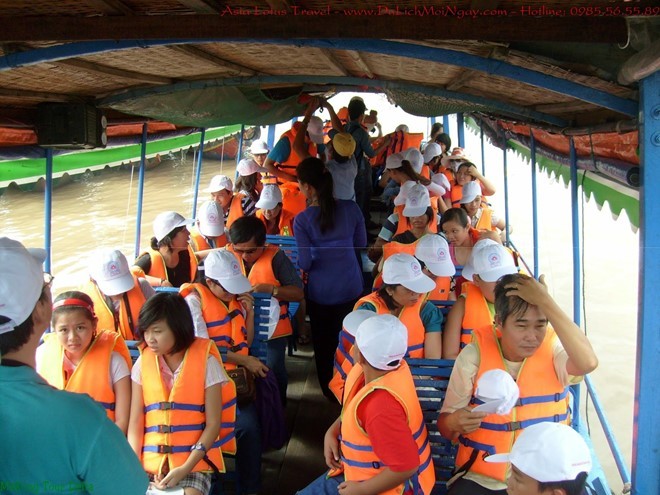
Buying things when coming to the Mekong Delta
When in the Delta, one more thing you should know is how to buy things in a right way. Tourists should carefully check the label, the expiry date, the origin of the product, then evaluate to see if that product is good or not to decide to buy or not.
When entering a crowded market, watch out for pickpockets despite the fact that people in the Delta are famous for being hospitable, gentle and honest.
Tourists should think about the size of your baggage before buying to avoid buying so many things causing difficulties in moving, traveling around.
Some other notes
Before traveling the Mekong Delta, tourists should carefully find out about the journey, the schedule, where to stop and stay, where to relax, where to visit. If you travel the Delta by taking the tour from a company, you should also read the schedule in advance to avoid being confused and remember to save the phone number of your tour guide or at least of one person in your tour.
The Mekong Delta has lots of sacred temples, pagodas. So when you visiting those places, you should dress correctly, elegantly and comply with some regulations of the local.
If you travel in times which has festivals, the place will be crowded, tourists should go with their group to avoid being lost and pay attention to your money, phone to prevent pick-pocketing.
Further information
History of Mekong Delta
It is believed that Marco Polo may have set eyes on the Mekong River in the 13th century. The Portuguese Dominican missionaries Father Gaspar da Cruz was the first European to describe traveling on the Mekong River. He spent 1555 to 1557 in Cambodia. The Dutch explorer Gerrot van Wuystoof wrote about it in 1641
The French had ideas of using the Mekong to navigate through Southeast Asia into China but these dreams were dashed when an expedition led by Francis Garnier in the 1860s discovered a major obstacle, Khone Falls, in southern Laos. He suggested blasting a canal next to the canal but a short railroad was built instead (see Khone Falls, Laos) but the effort led to only minimal increases of commerce on the river.
A treaty signed in 1893 by France and Siam designated it as the border between Thailand and Laos. In World War II, a number of battles were fought in the proximity of the Mekong in China. During the Vietnam War, the river Mekong Delta in particular was the site of some bloody guerilla warfare.
Mekong Delta tours
Traveling in the Mekong Delta is usually done these days through organized tours. Travel agencies and cafes offer one-day to week-long tours of the delta which includes bus travel from Saigon, boat trips through canals, hikes to villages, shopping in a snake market and overnight accommodation in a Mekong Delta town. Tours also usually include demonstrations of “Vietnamese activities”—such as mushroom cultivating, incense-making, soy-paper-manufacturing, silk manufacturing, sugar refining, silkworm breeding, mat making and rice-wine producing—in which visitors walk through people’s homes and watch do their daily chores and crafts as cottage industries.
My suggestion is to sign up for a two-day, one-night tour and ask if you can stay over for one or two days, explore around on your own, and then catch the bus for another tour. This is easier than taking a regular bus to the delta and allows you to explore on your own and have the benefit of guide.Much of the delta is the same. If you want to get a feel for what it is like, simply take a taxi out of town, walk around, and take a taxi back.
My Thuan Bridge is new bridge over the Mekong River between Ny Tho and Vinh Long in southern Vietnam. Inaugurated in 2002, it was built with Australia donor funds and is over a mile long. This bridge has made it possible to travel from Ho Chi Minh City to the heart of the Mekong Delta without taking a ferry.
Some photos of the Mekong Delta:
Read more Mekong Delta travel guide at here.

